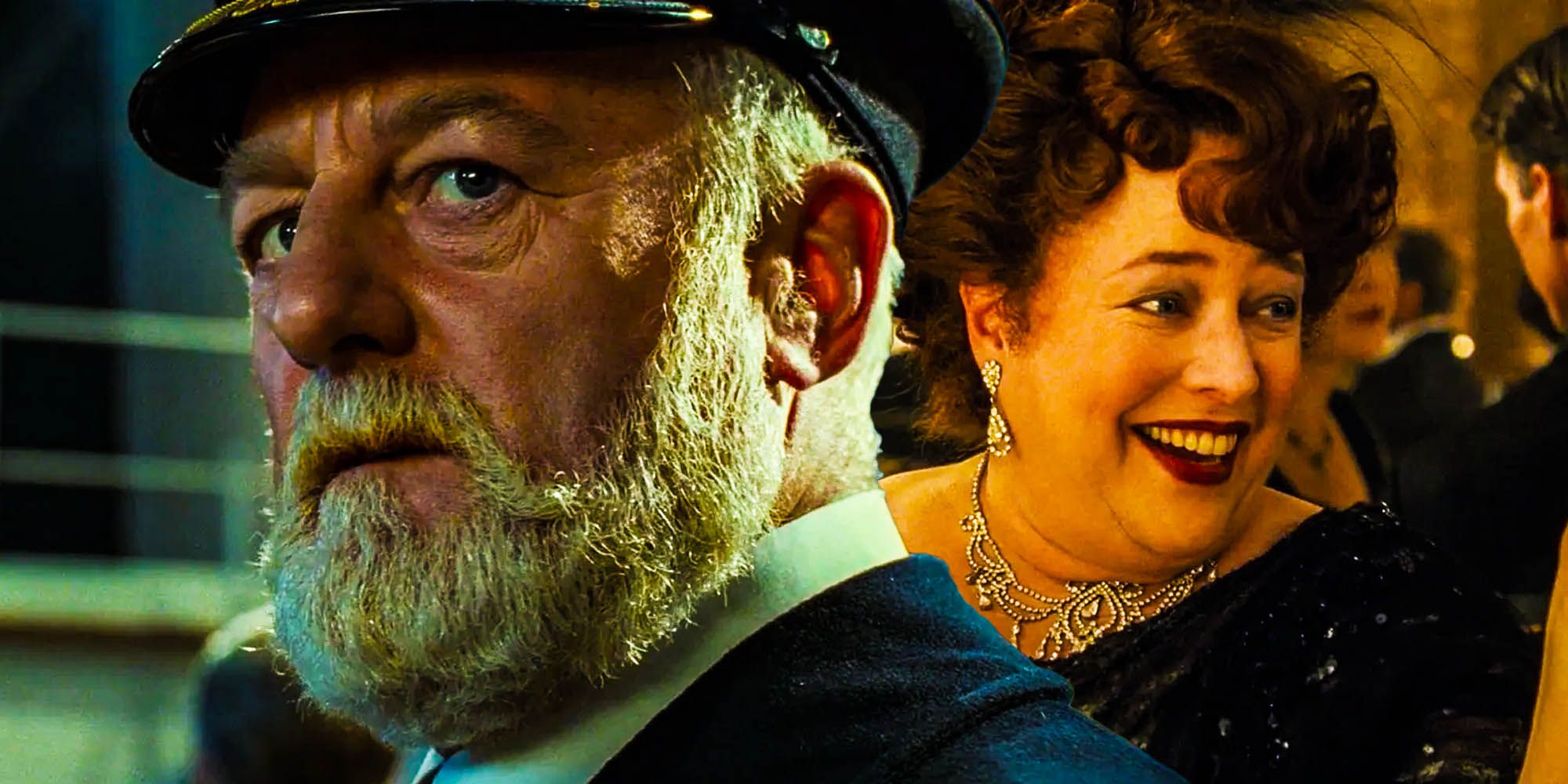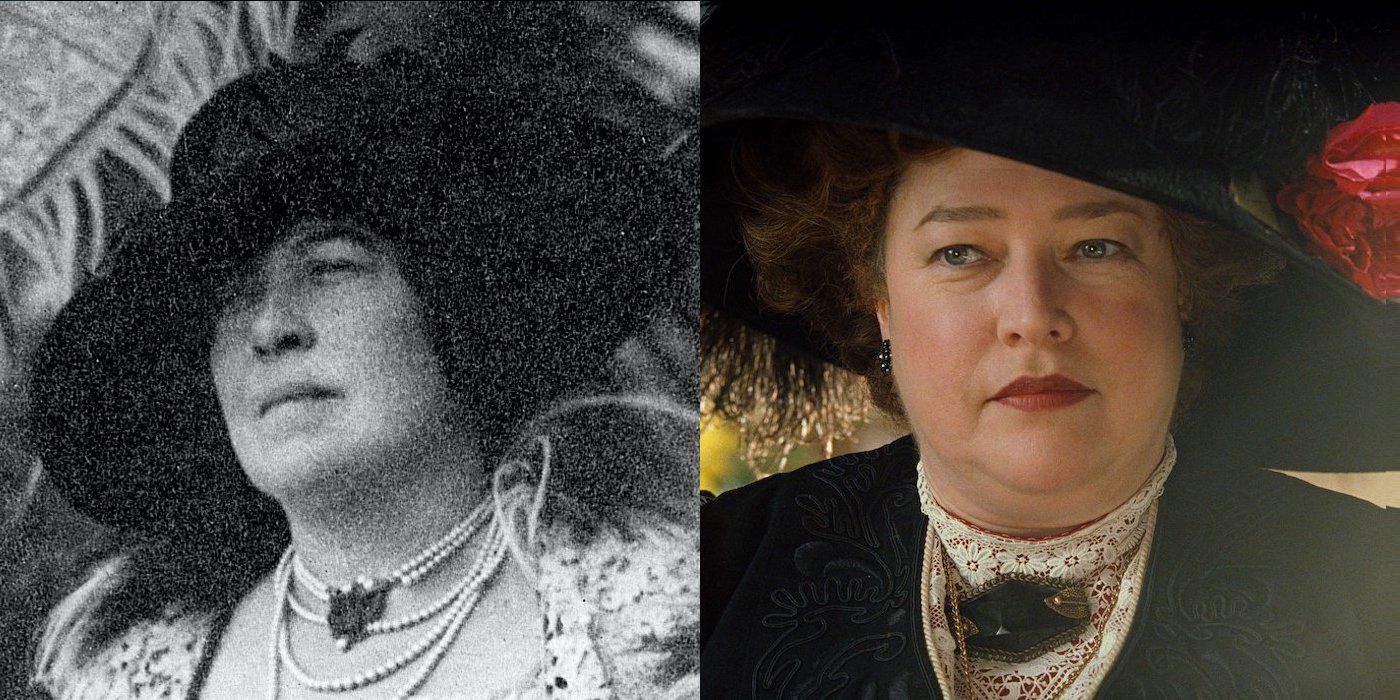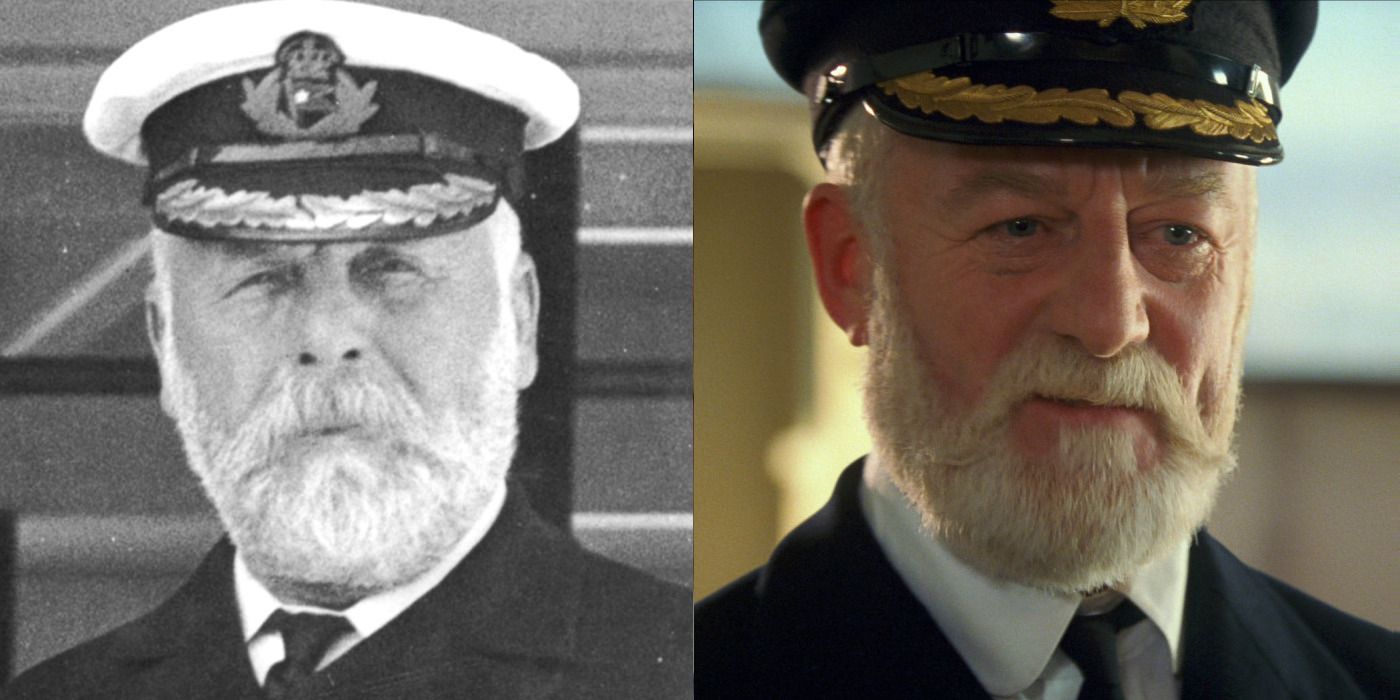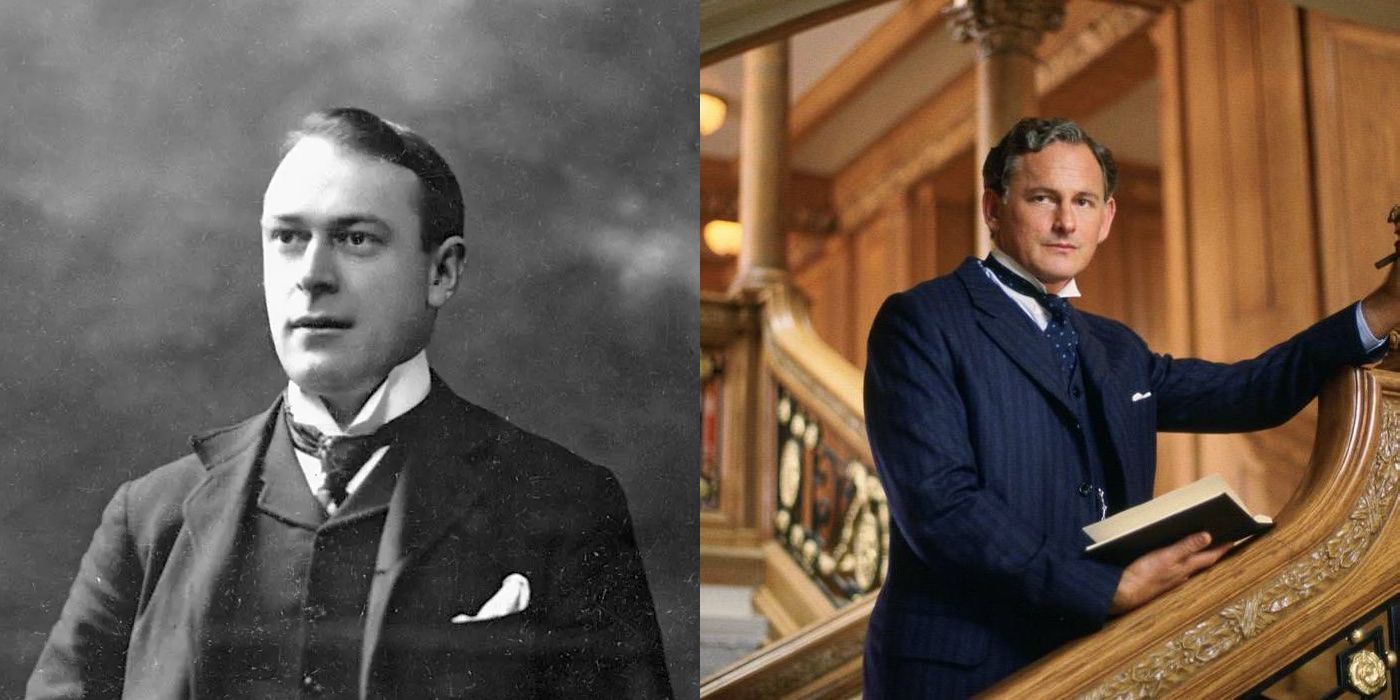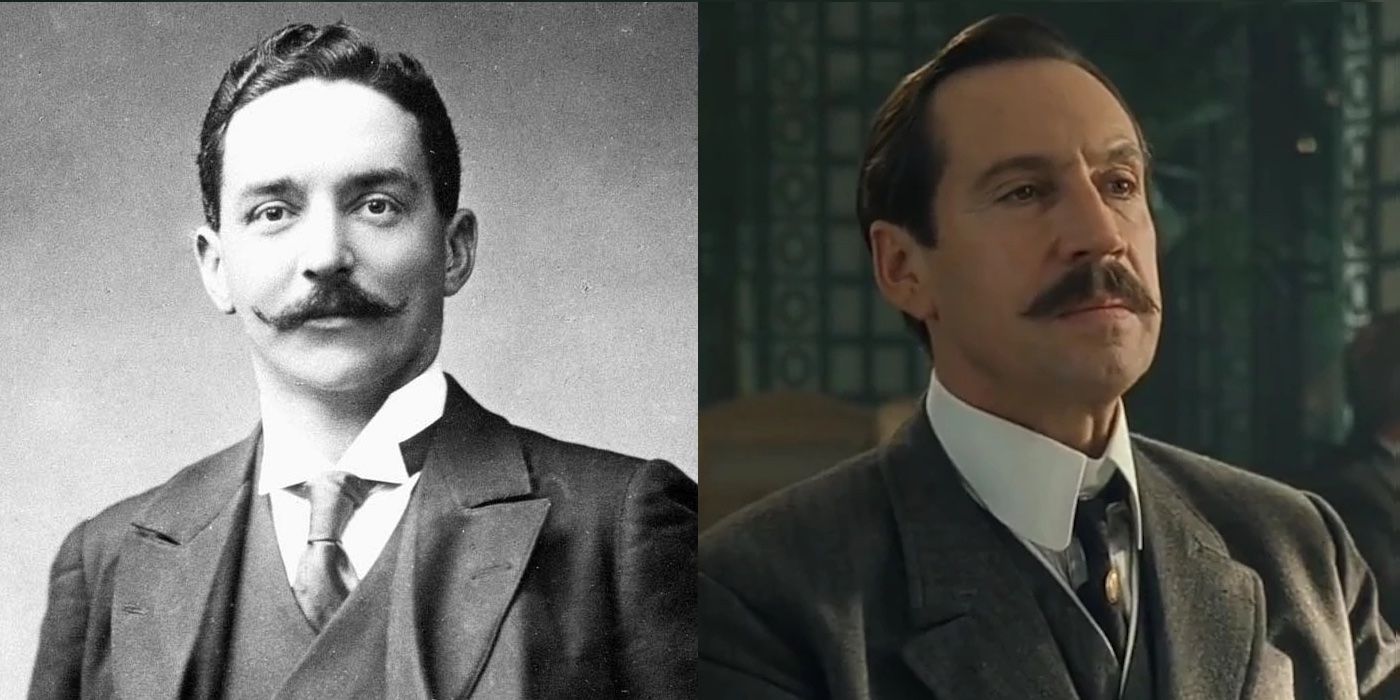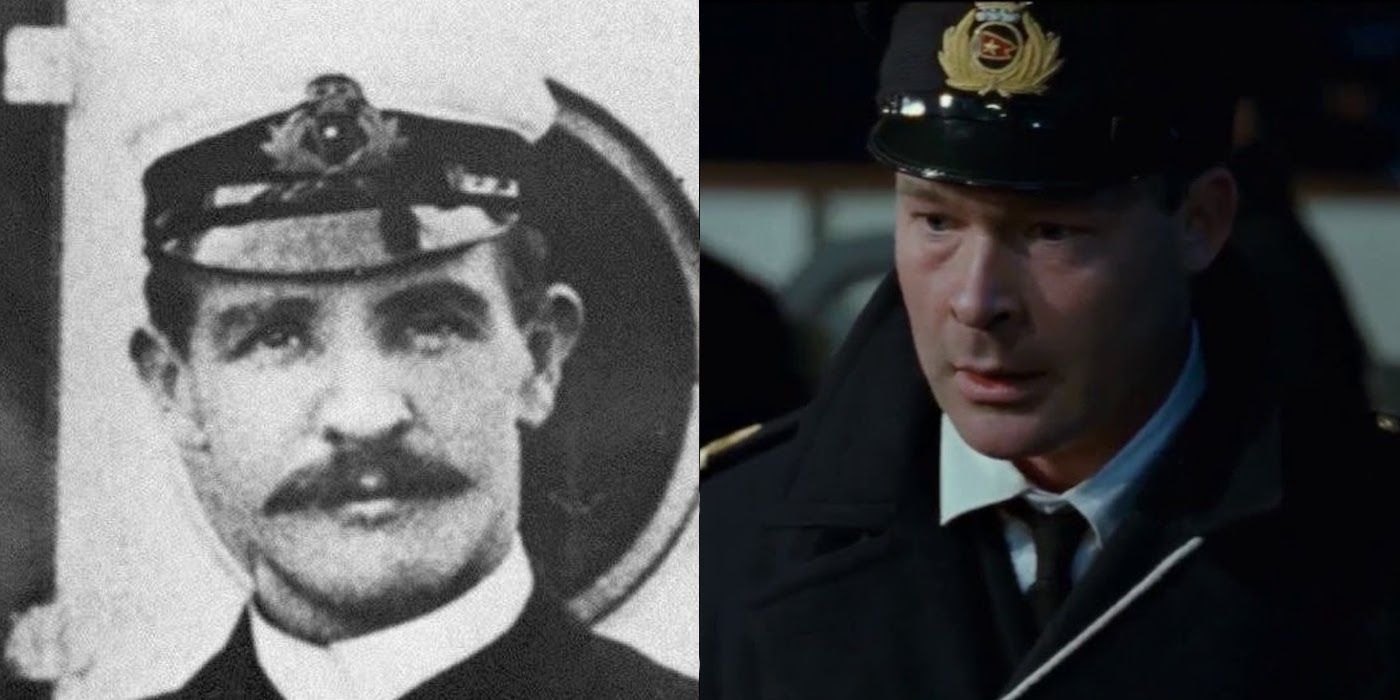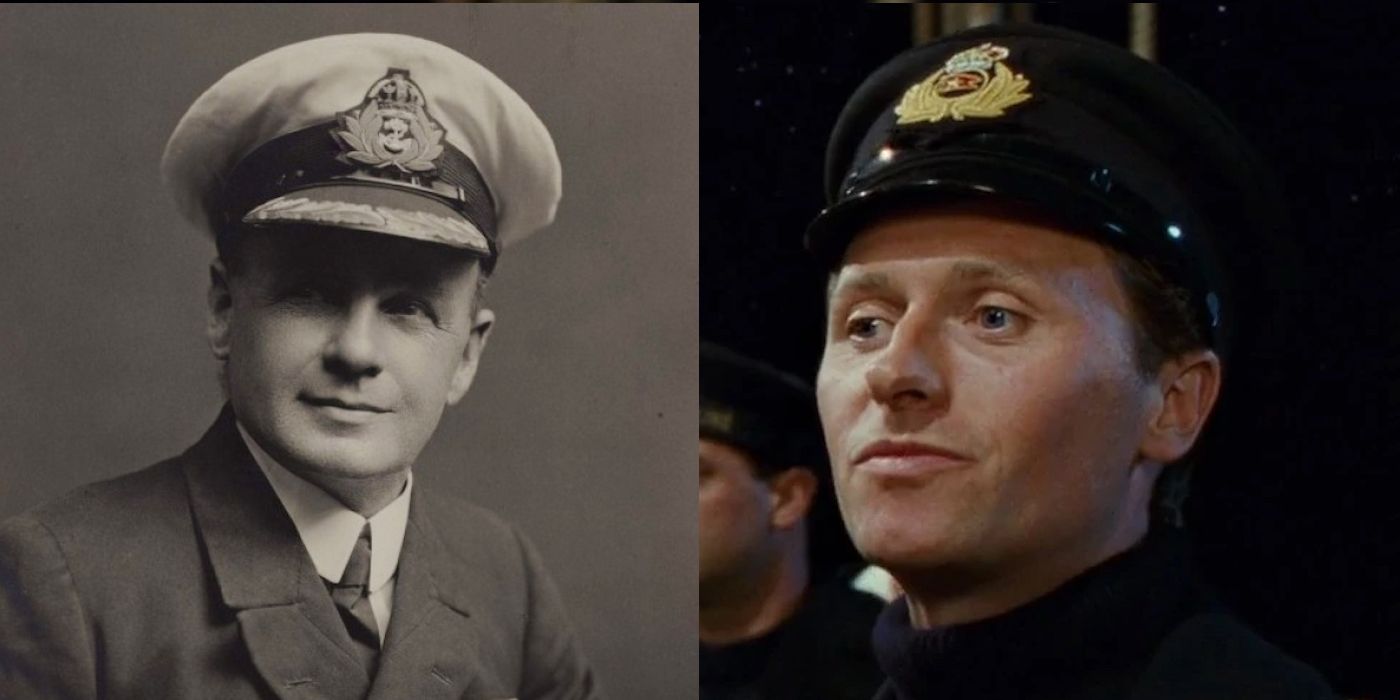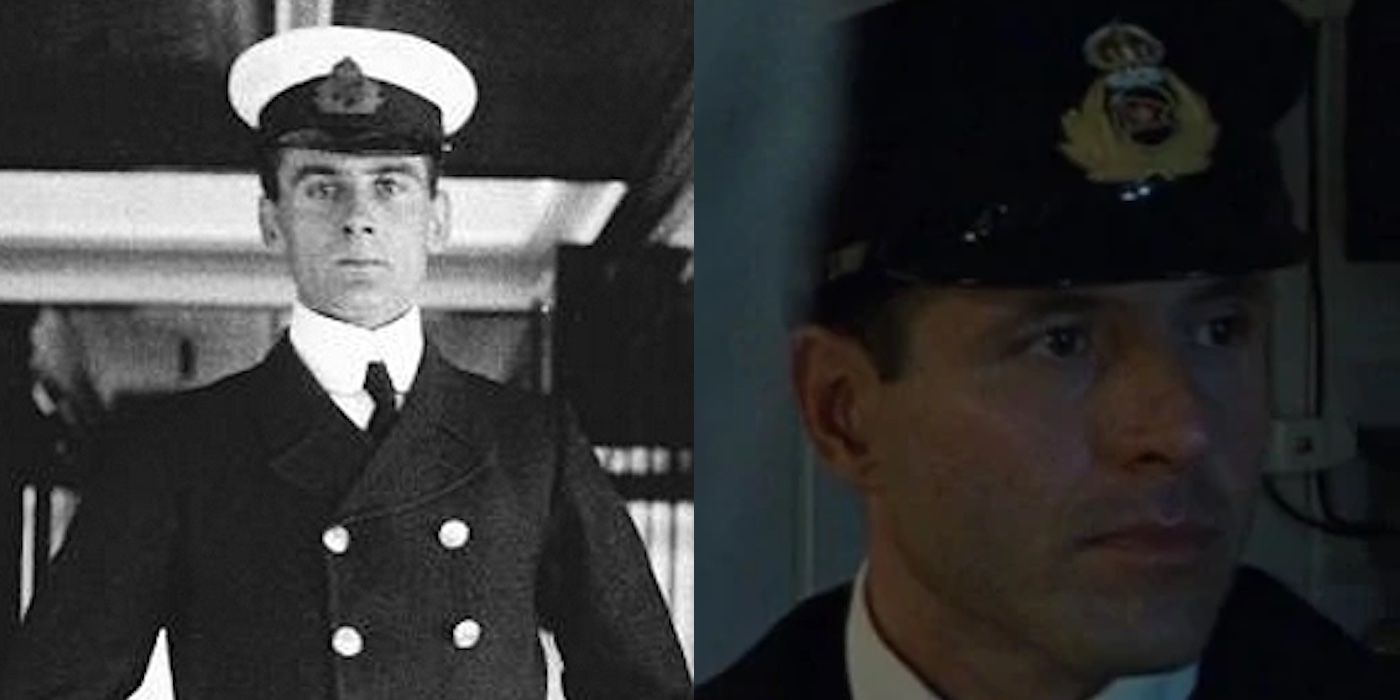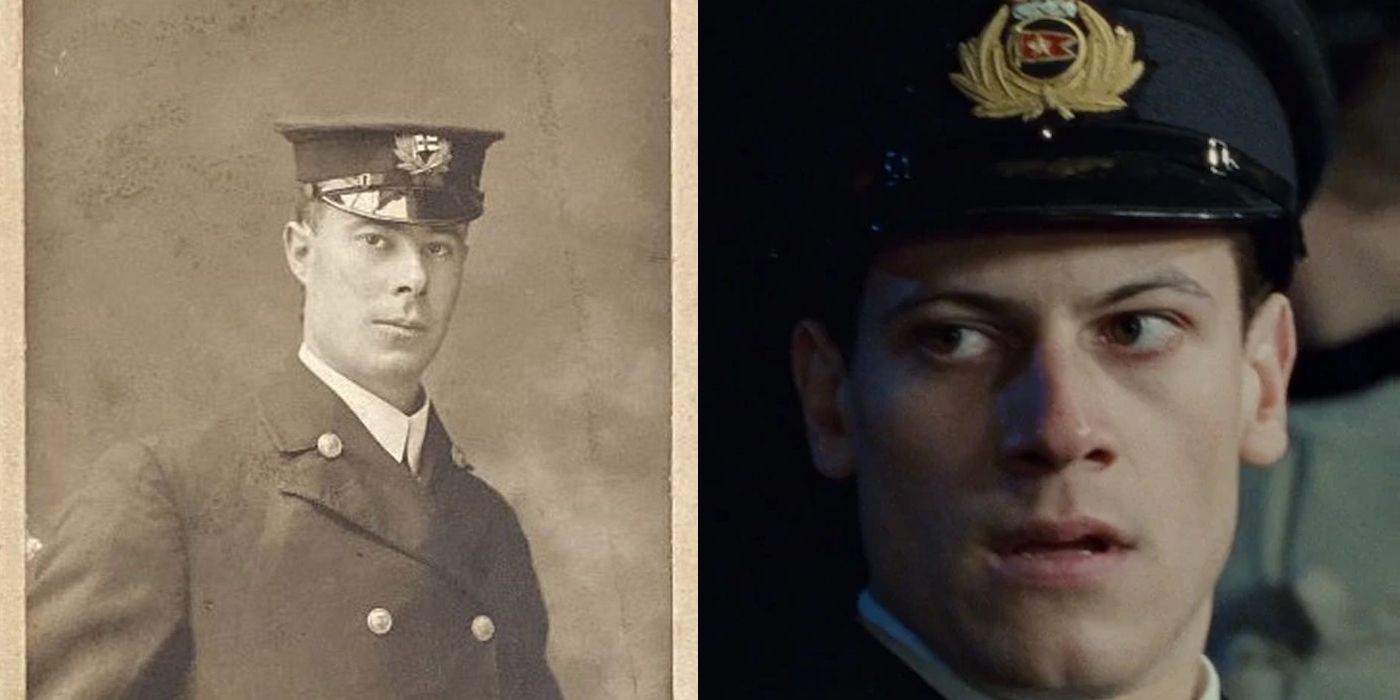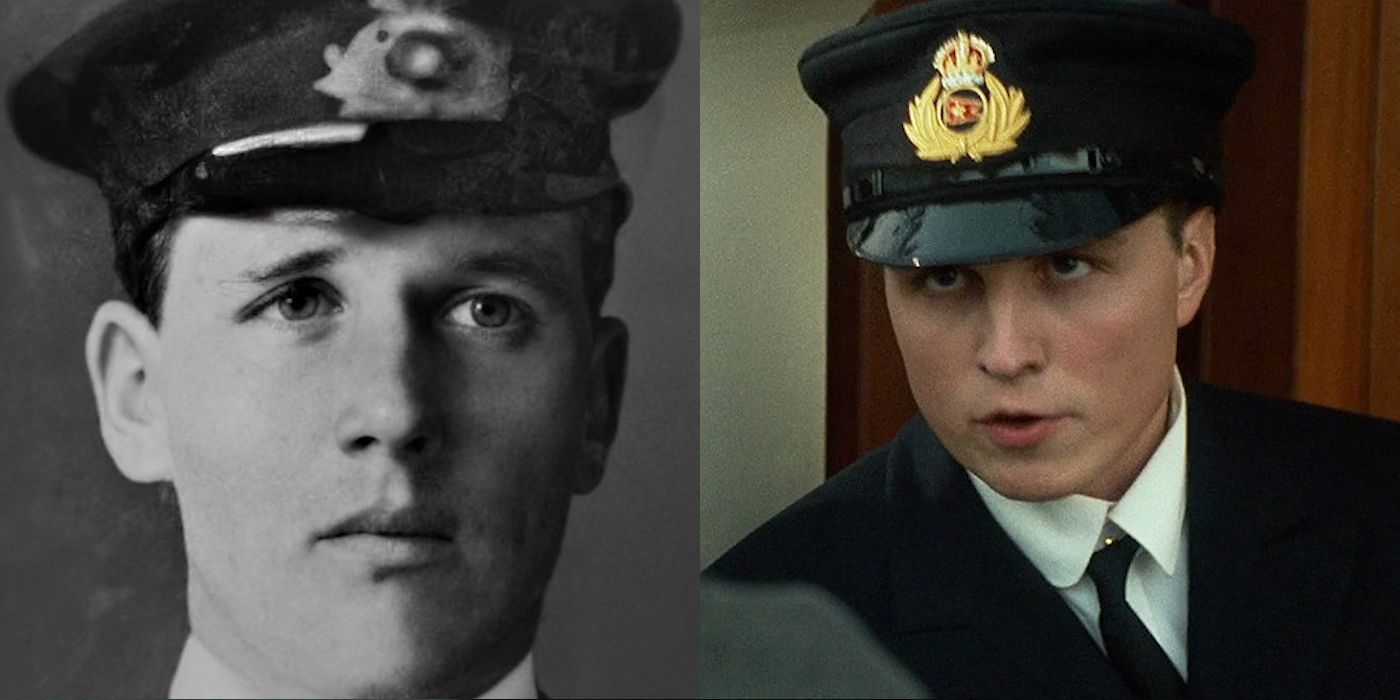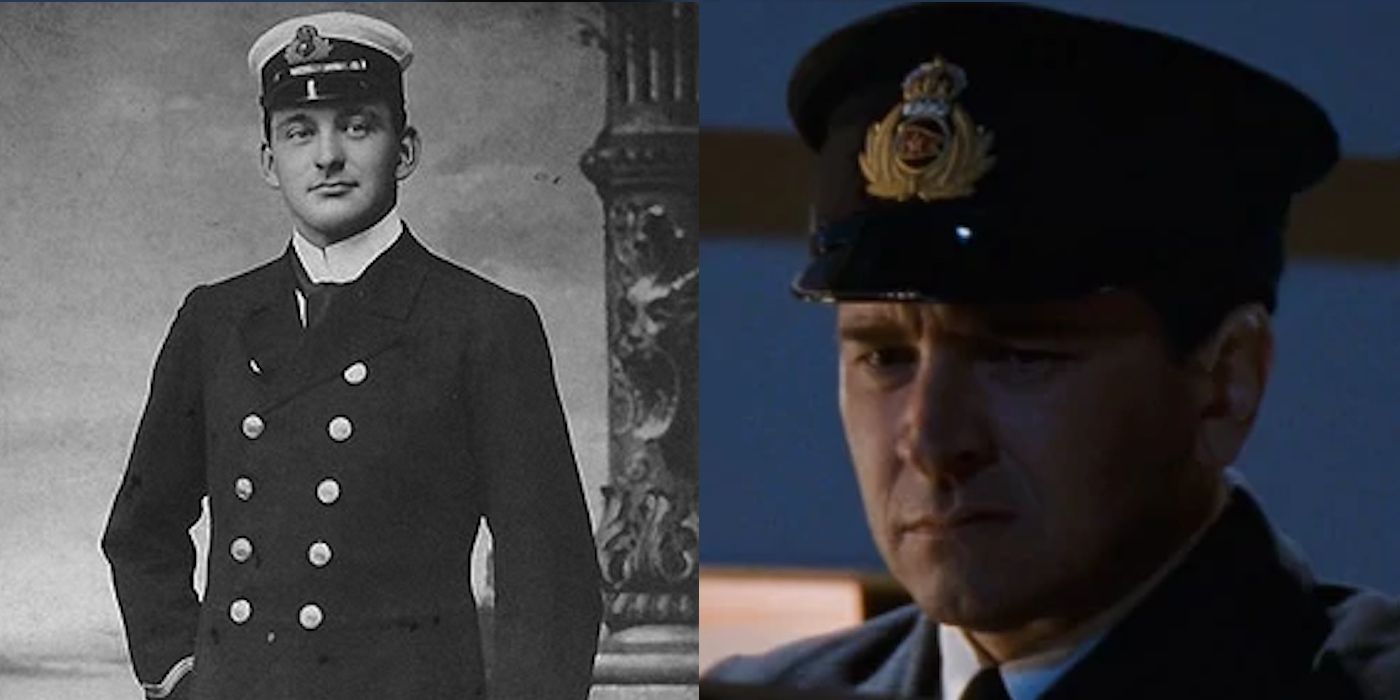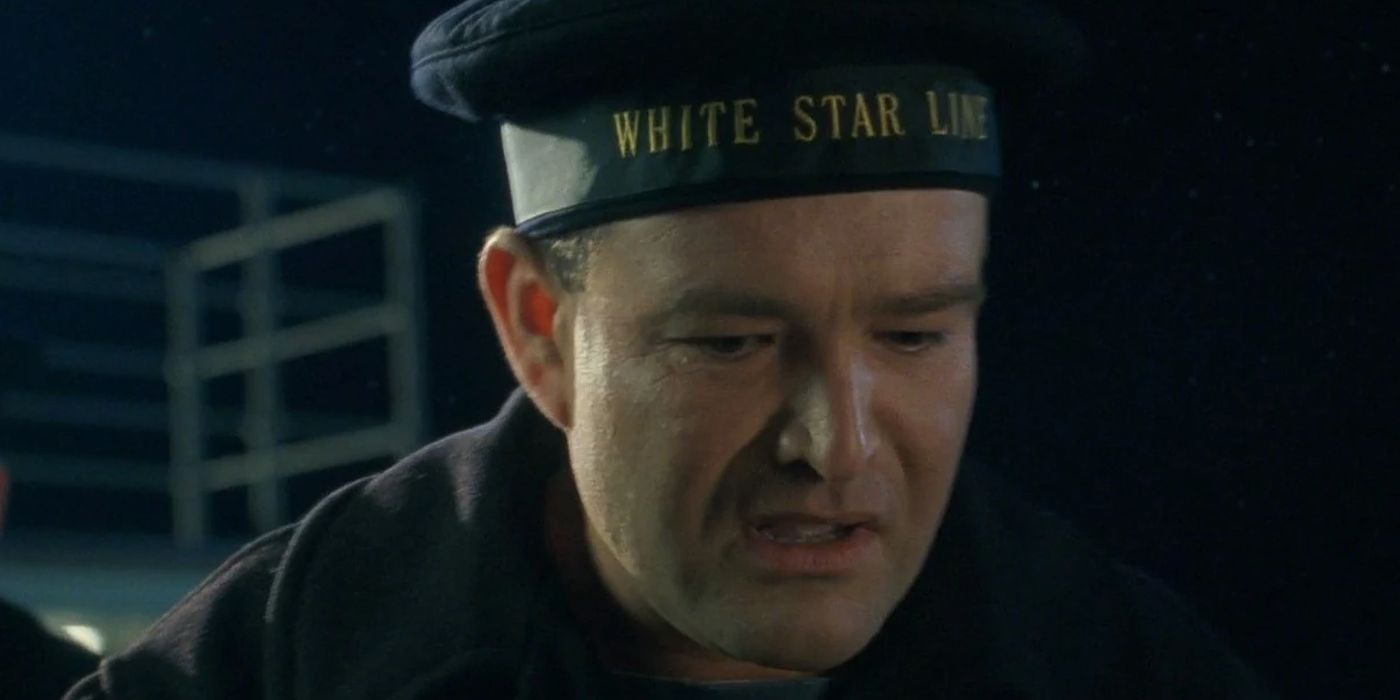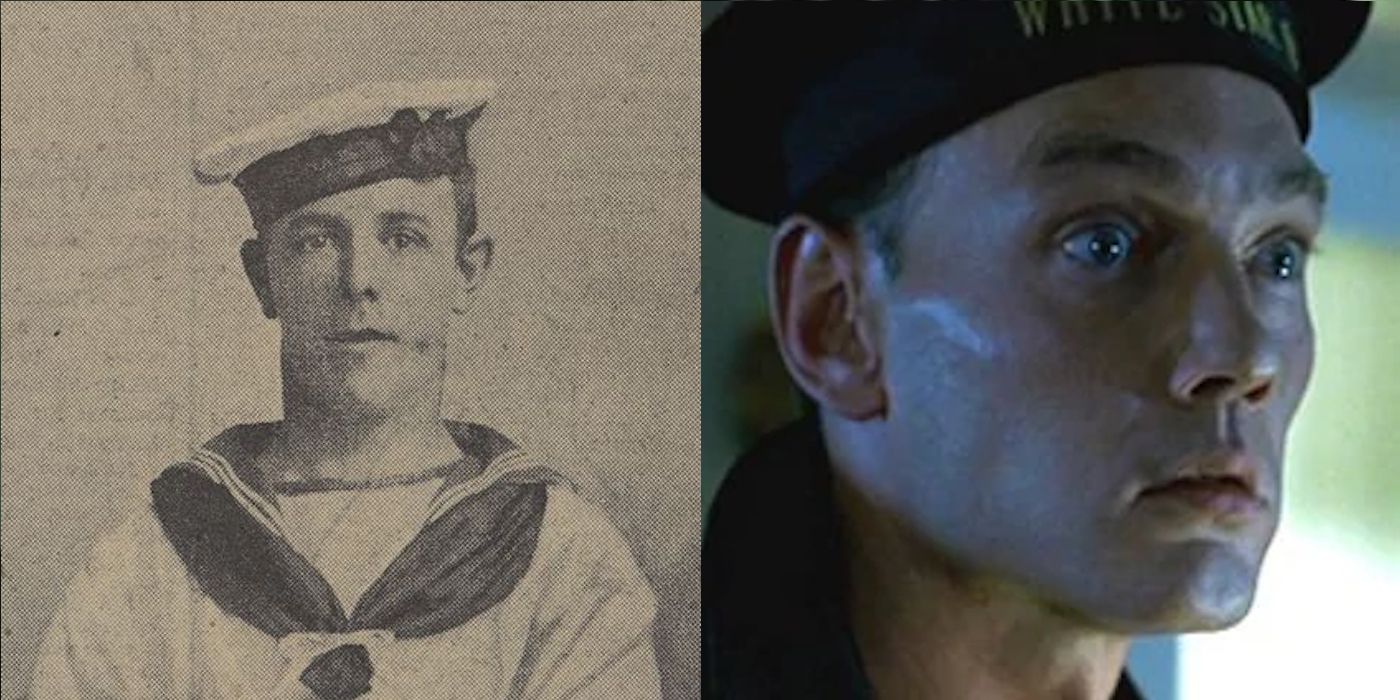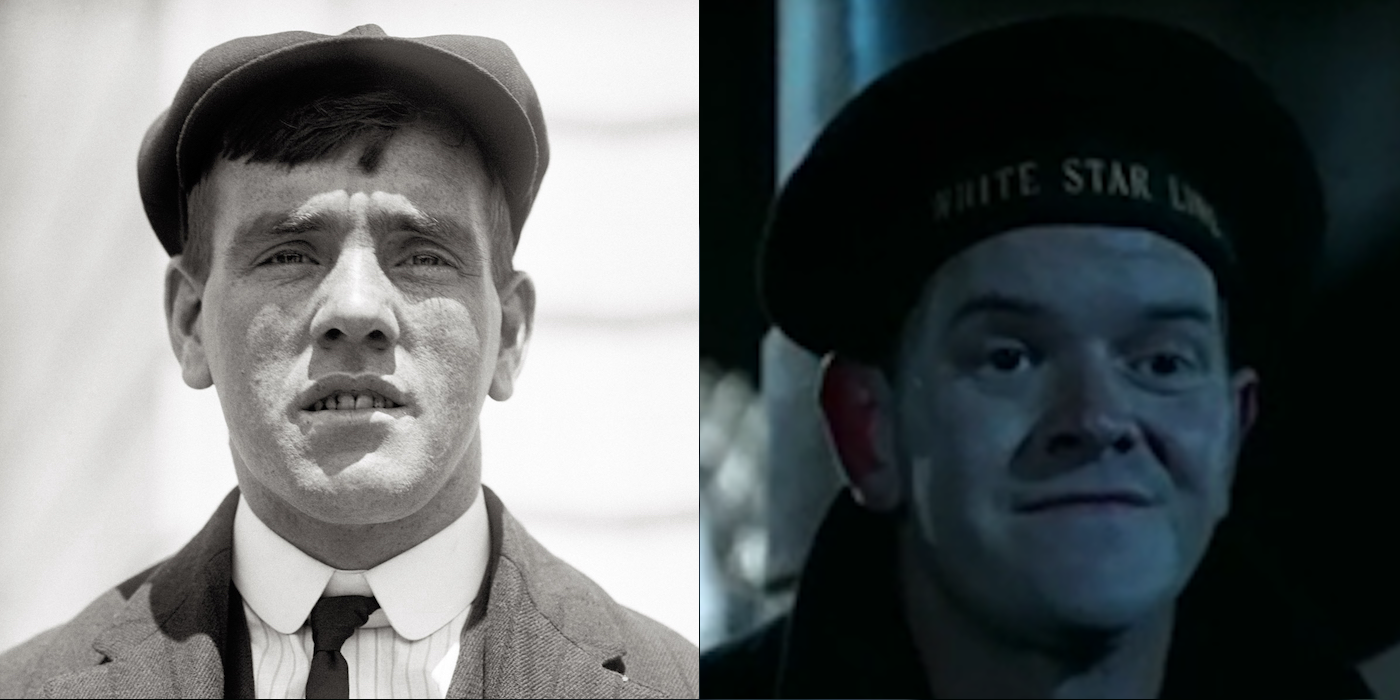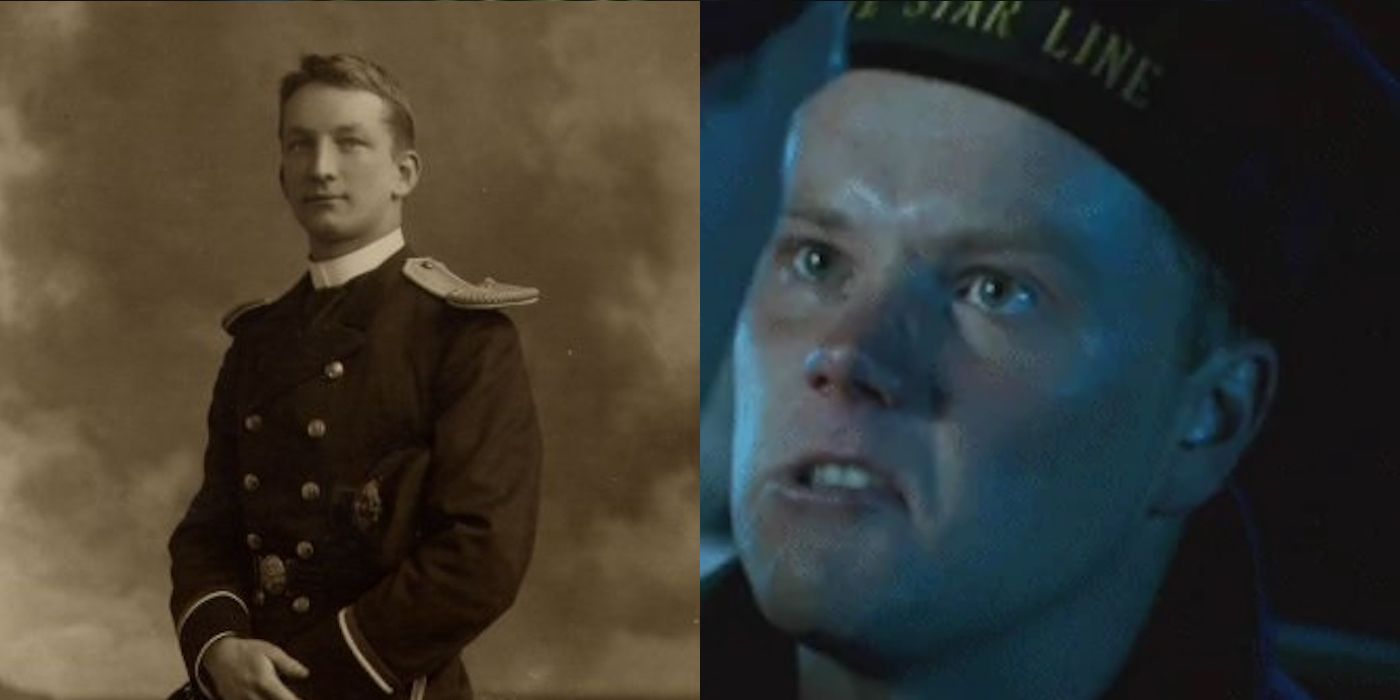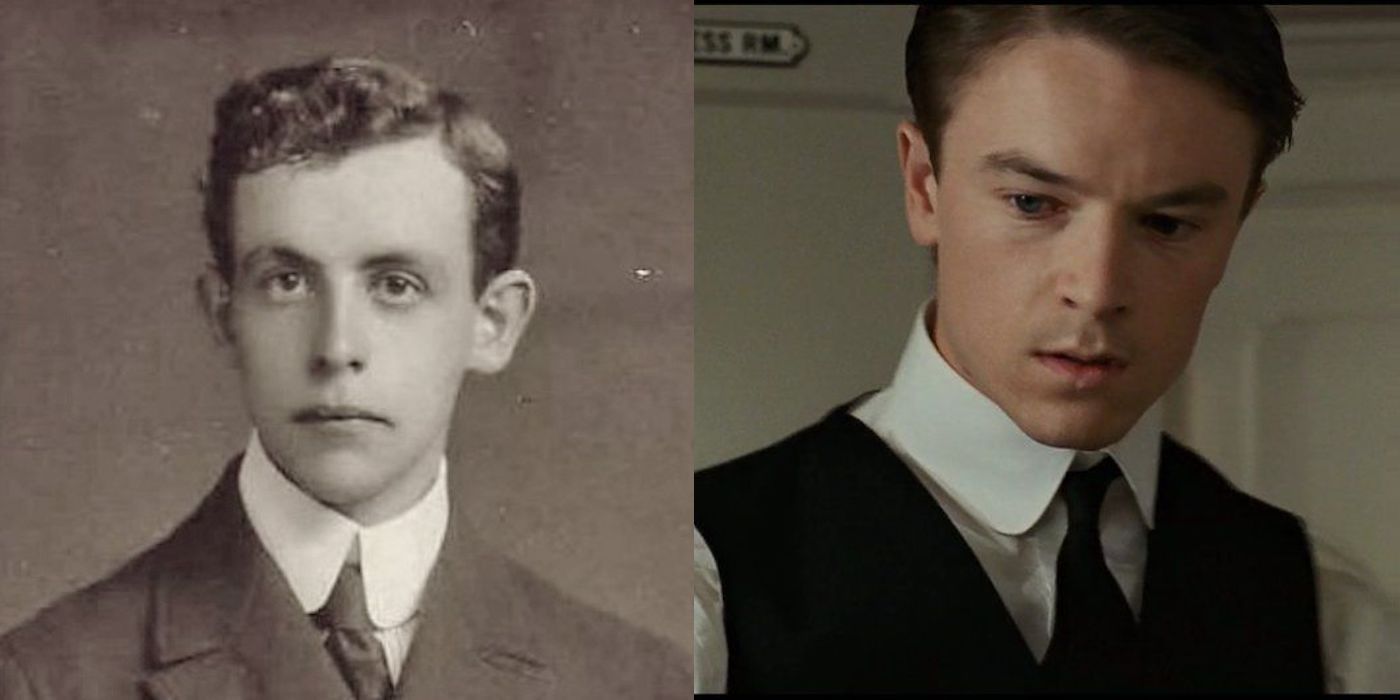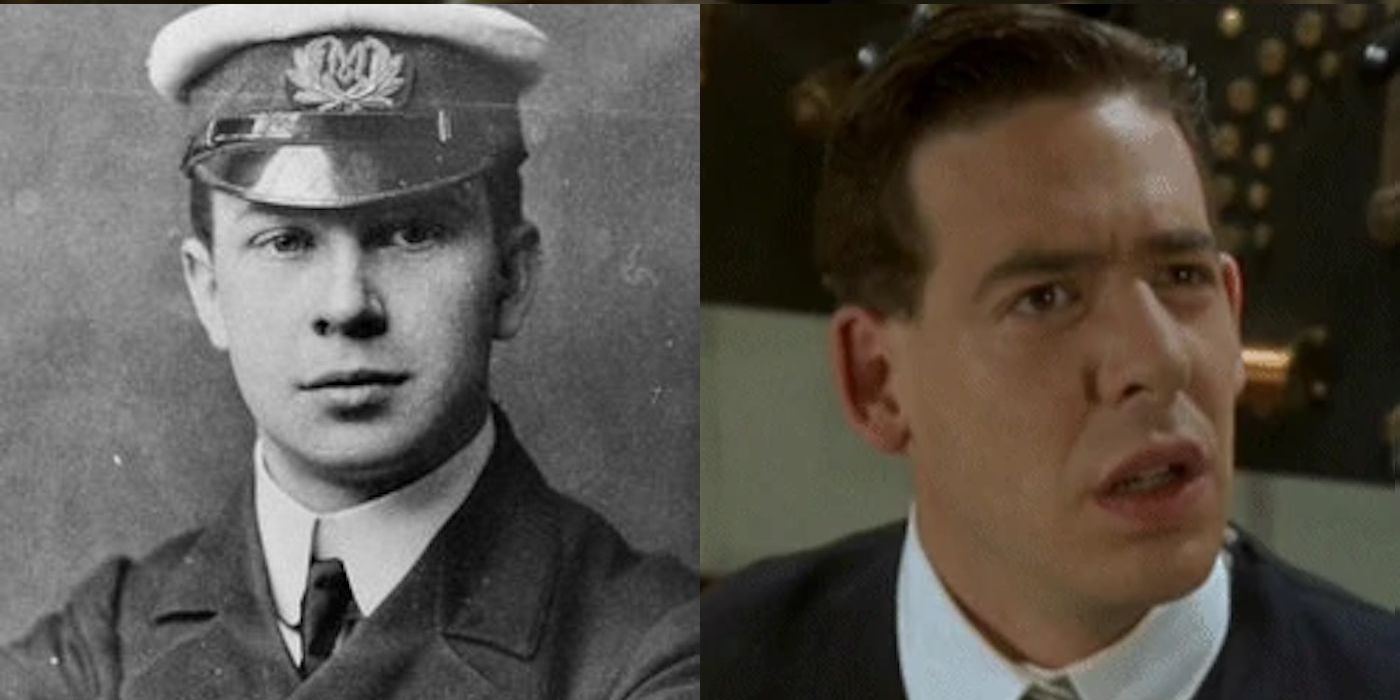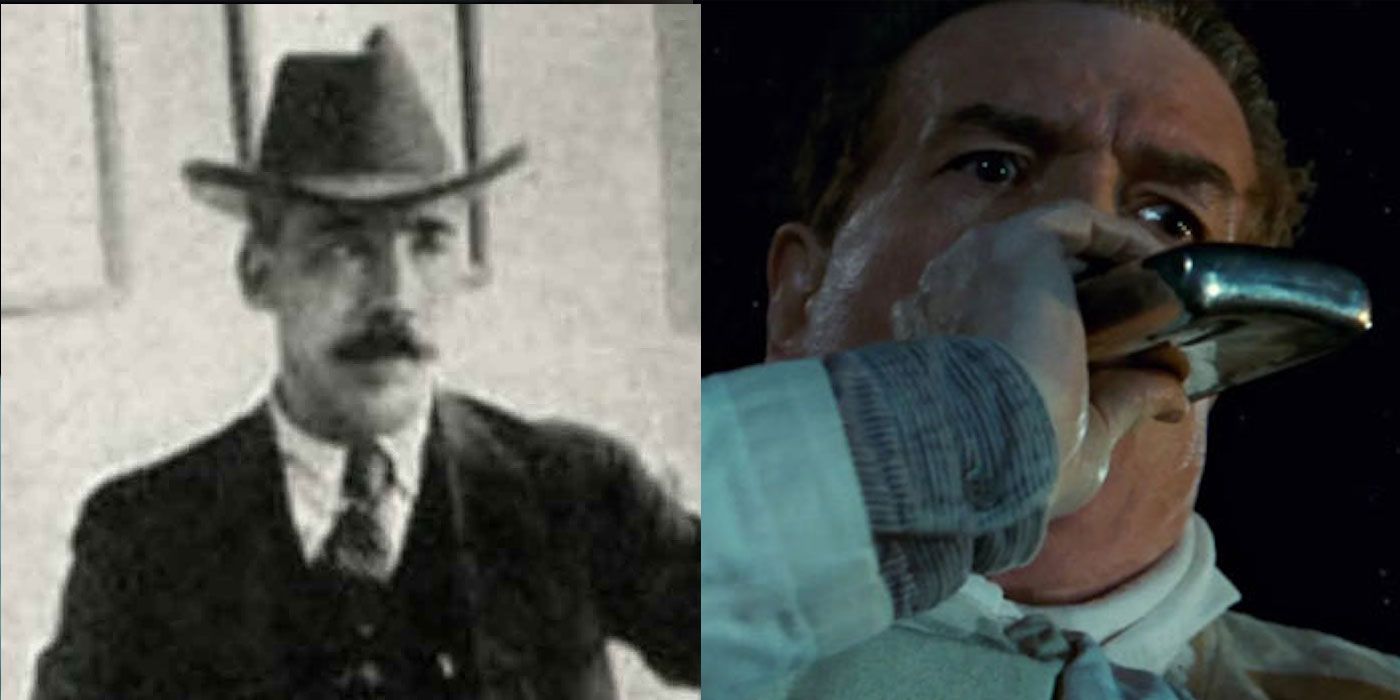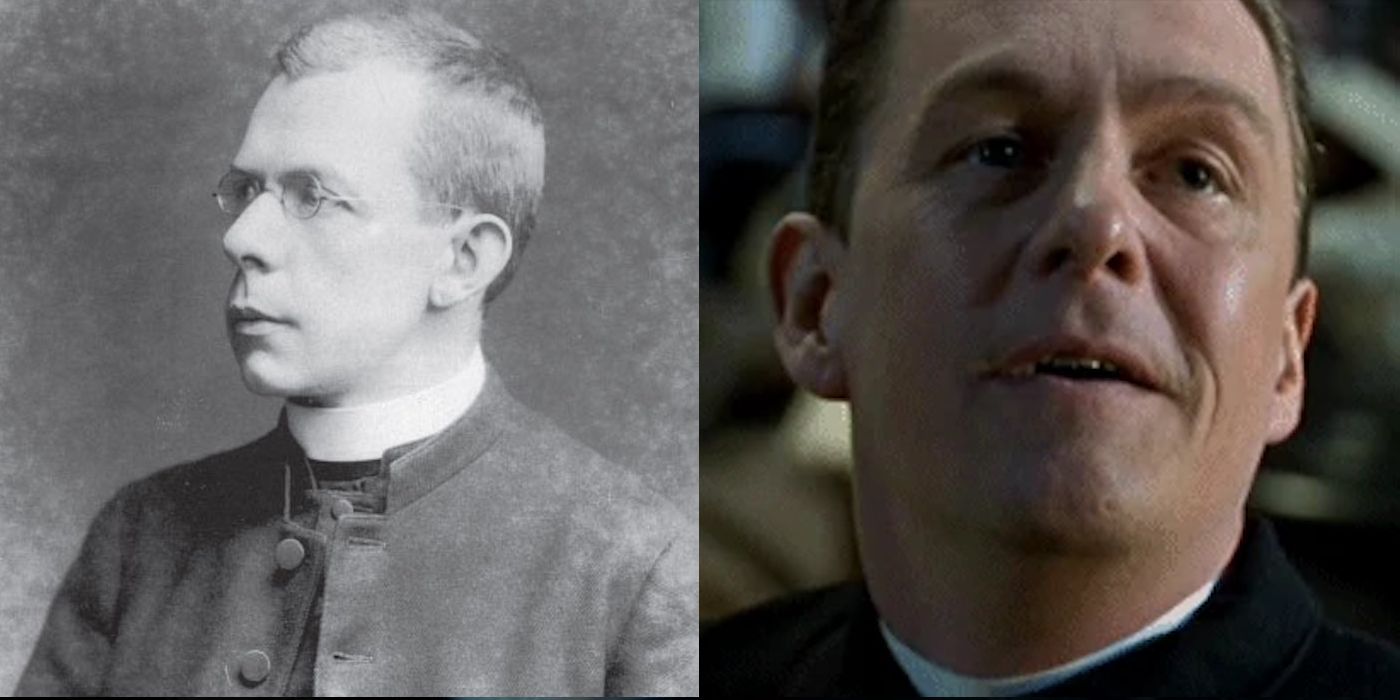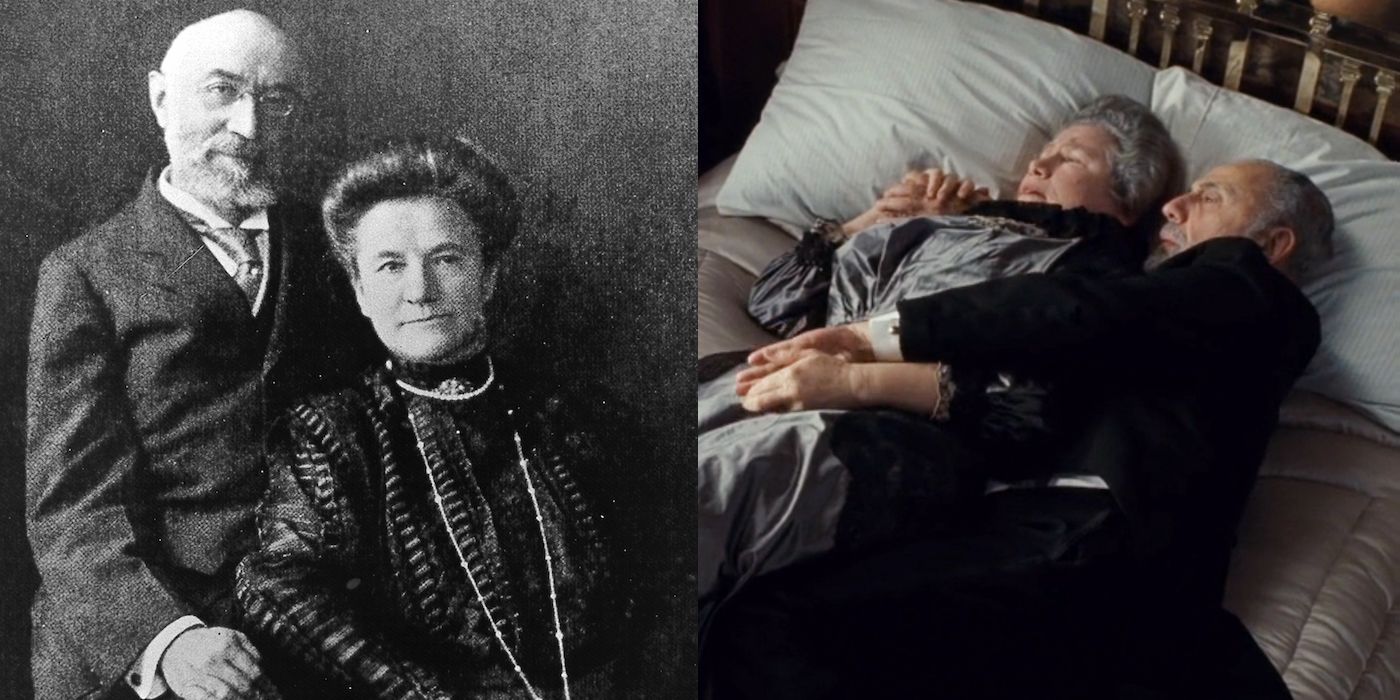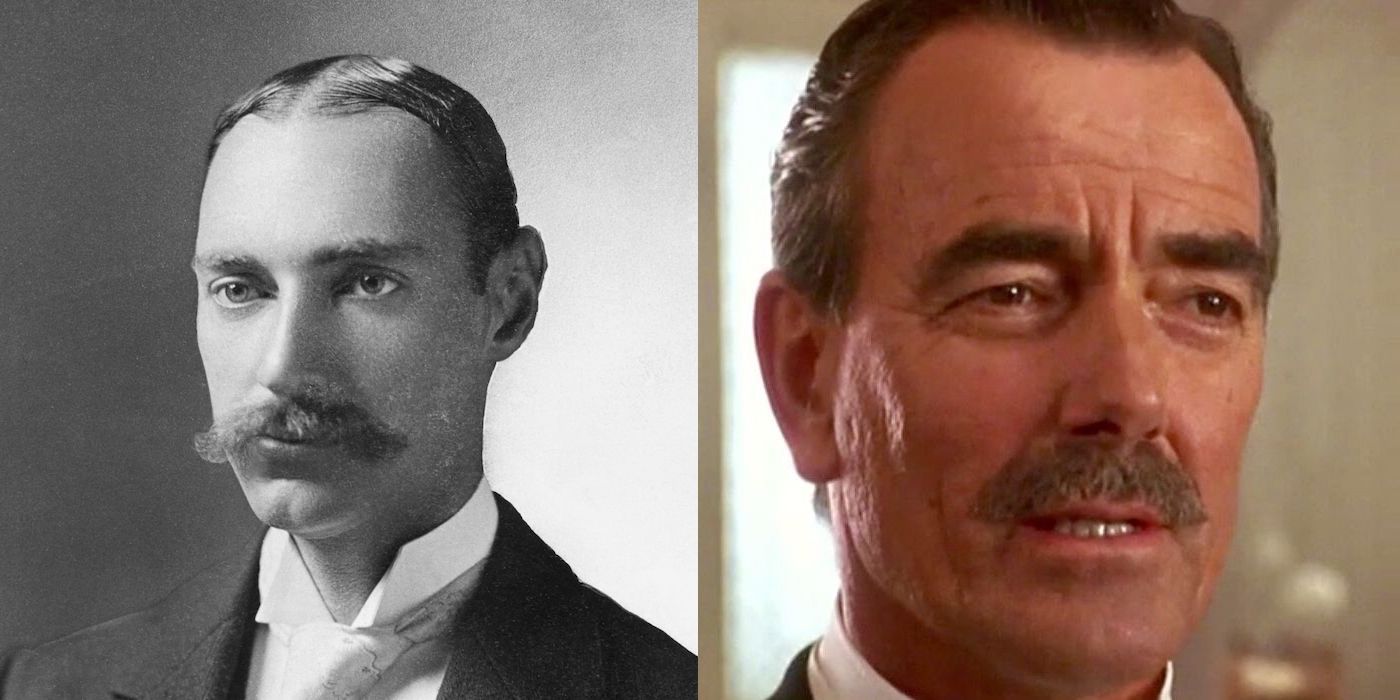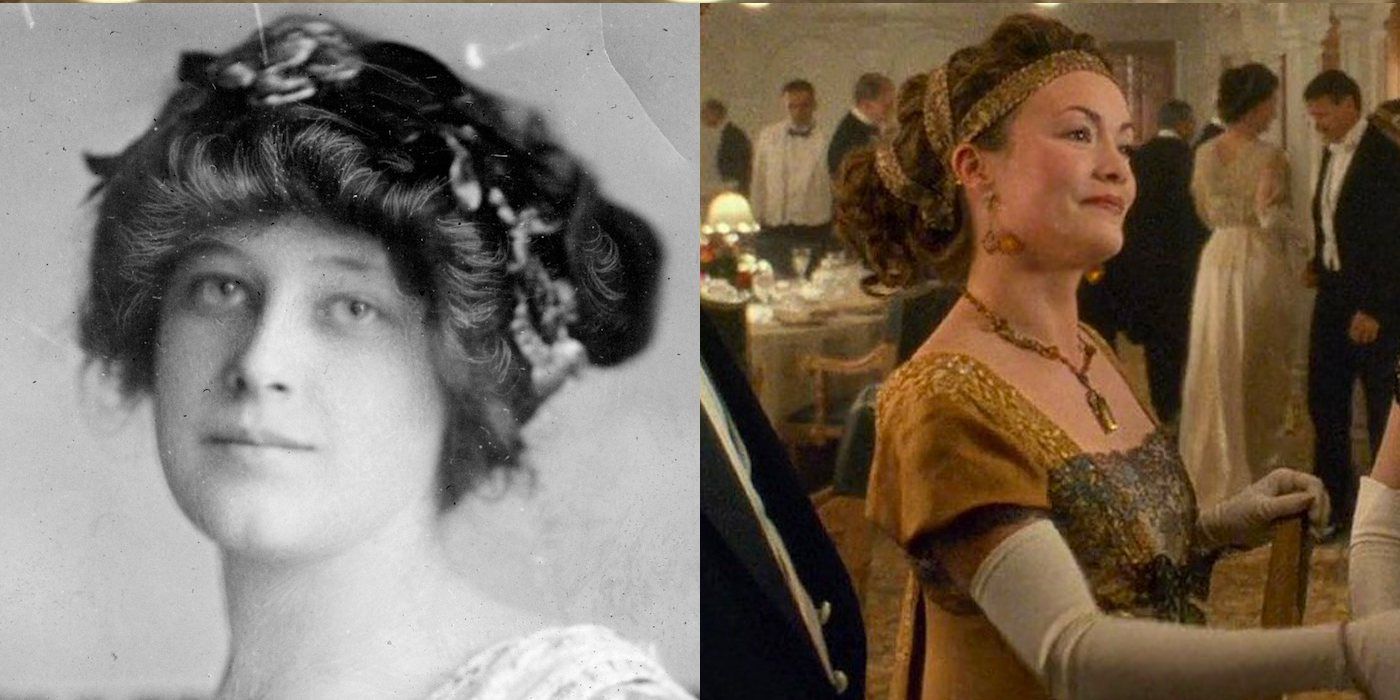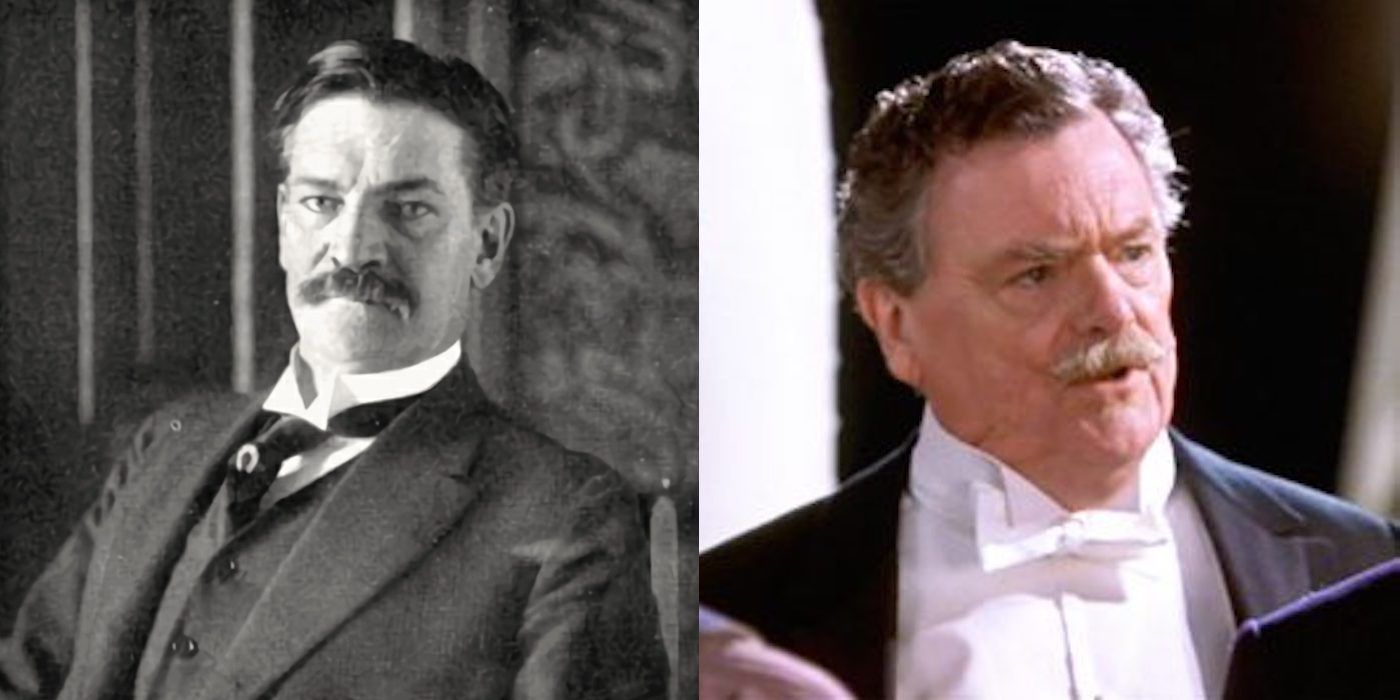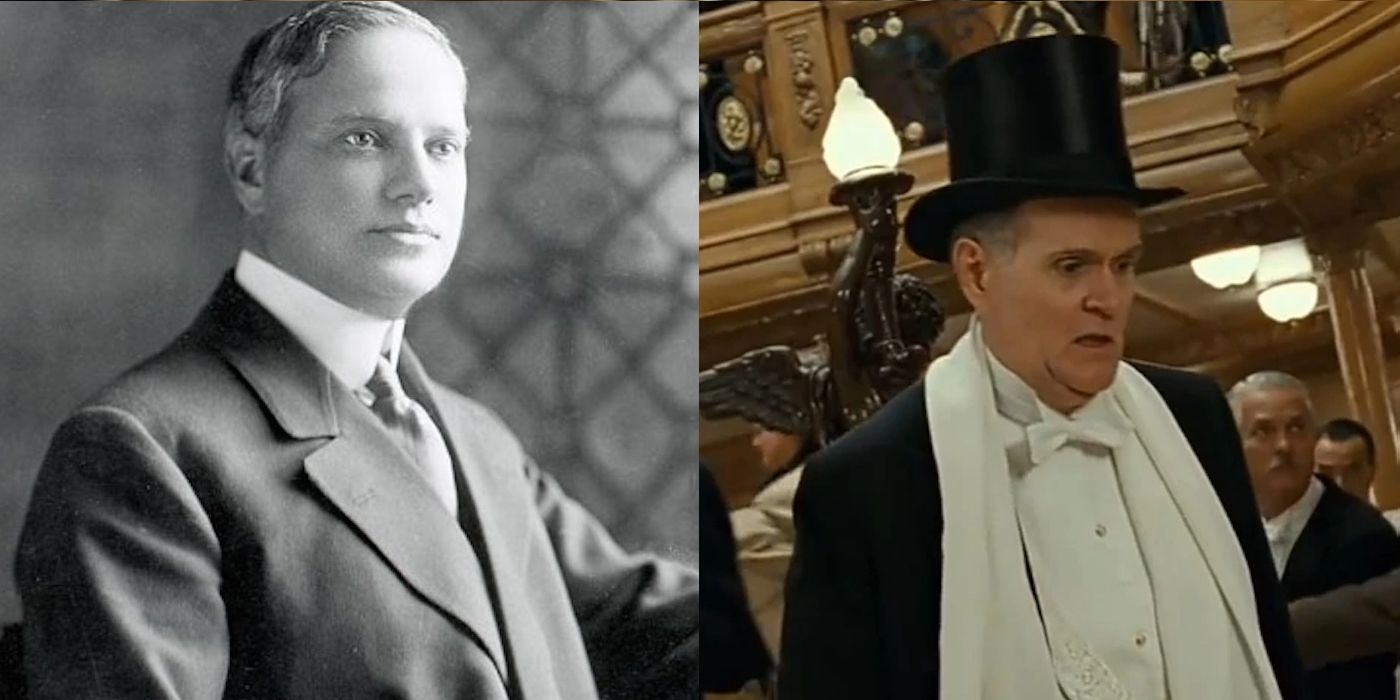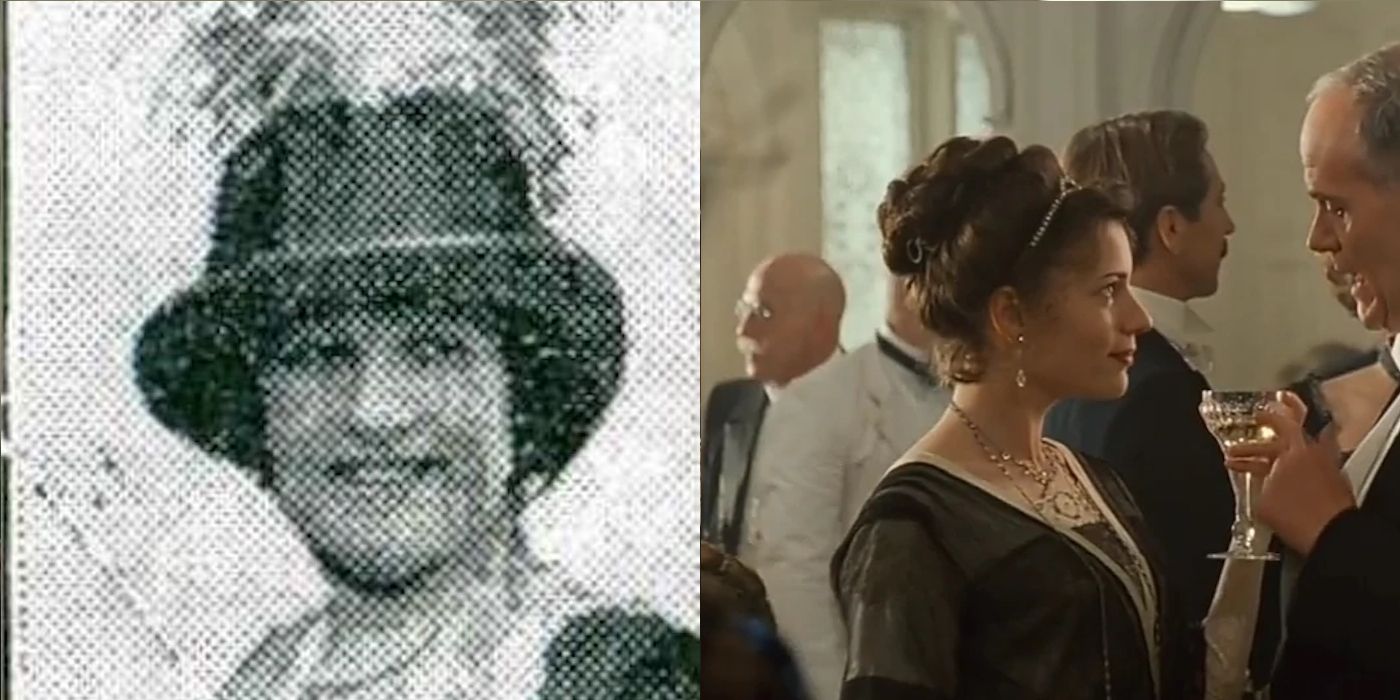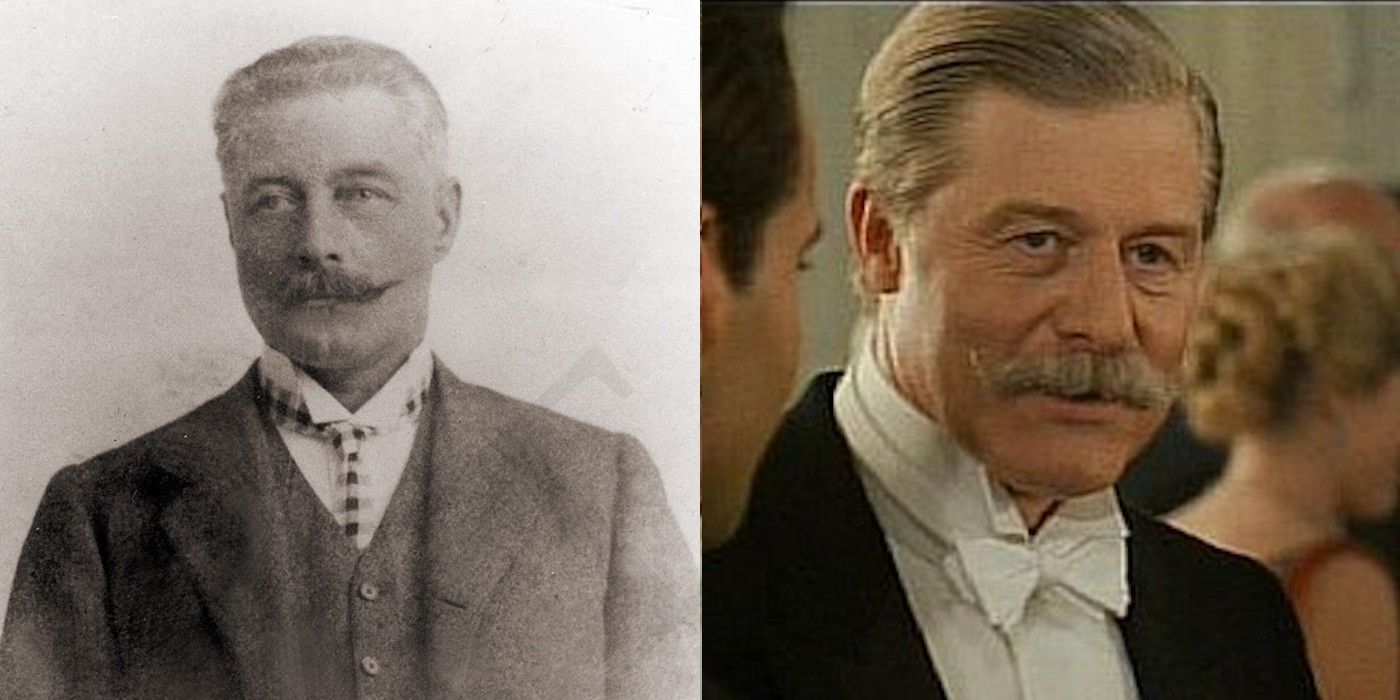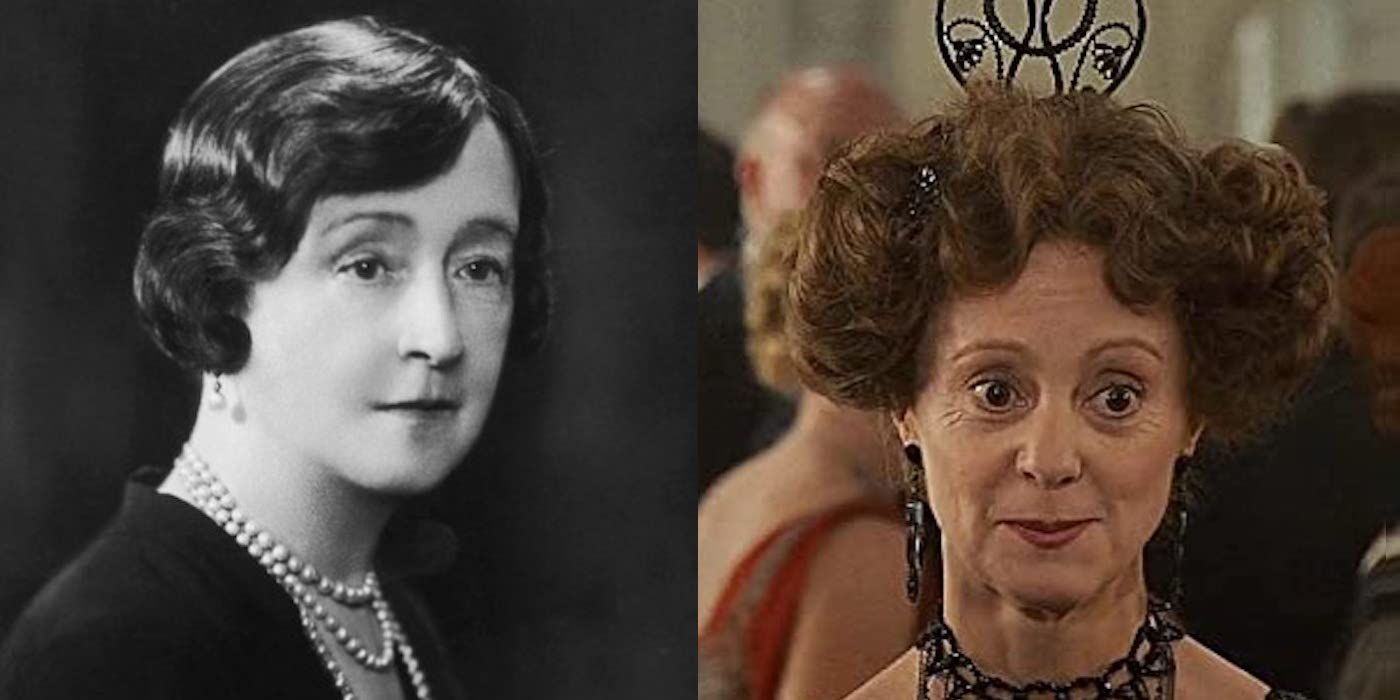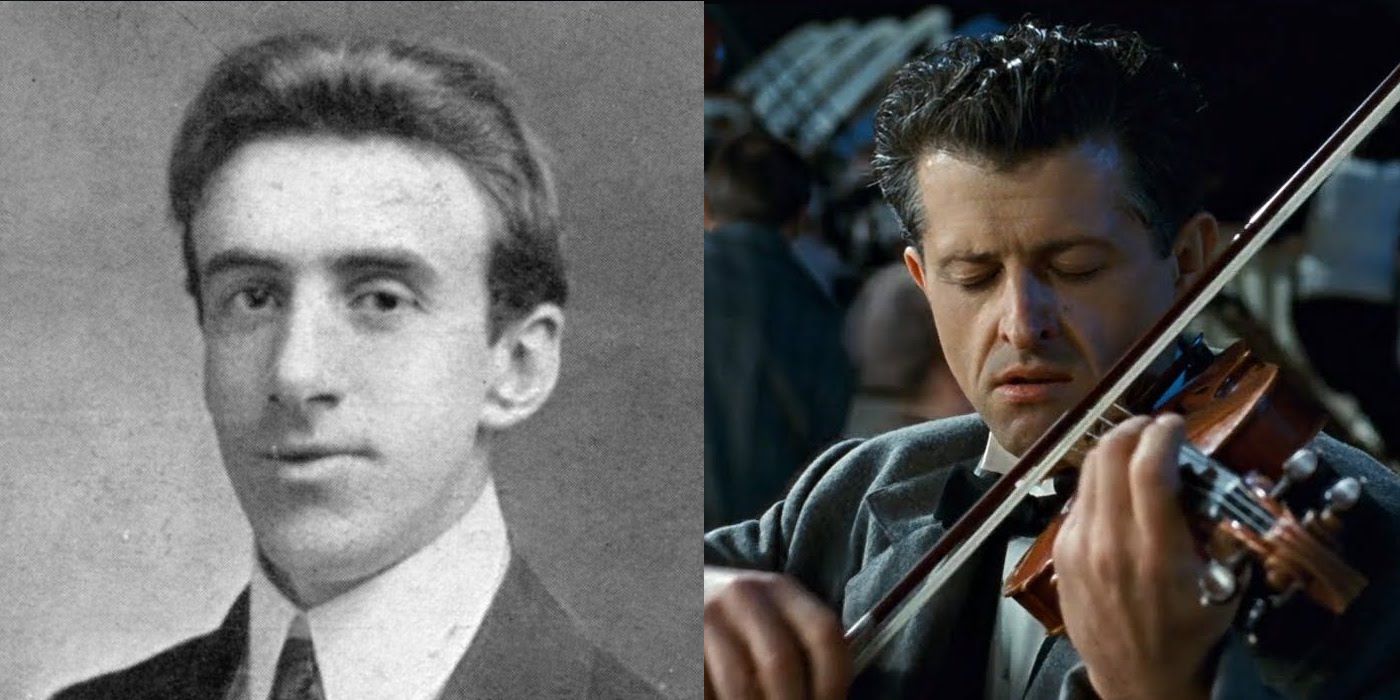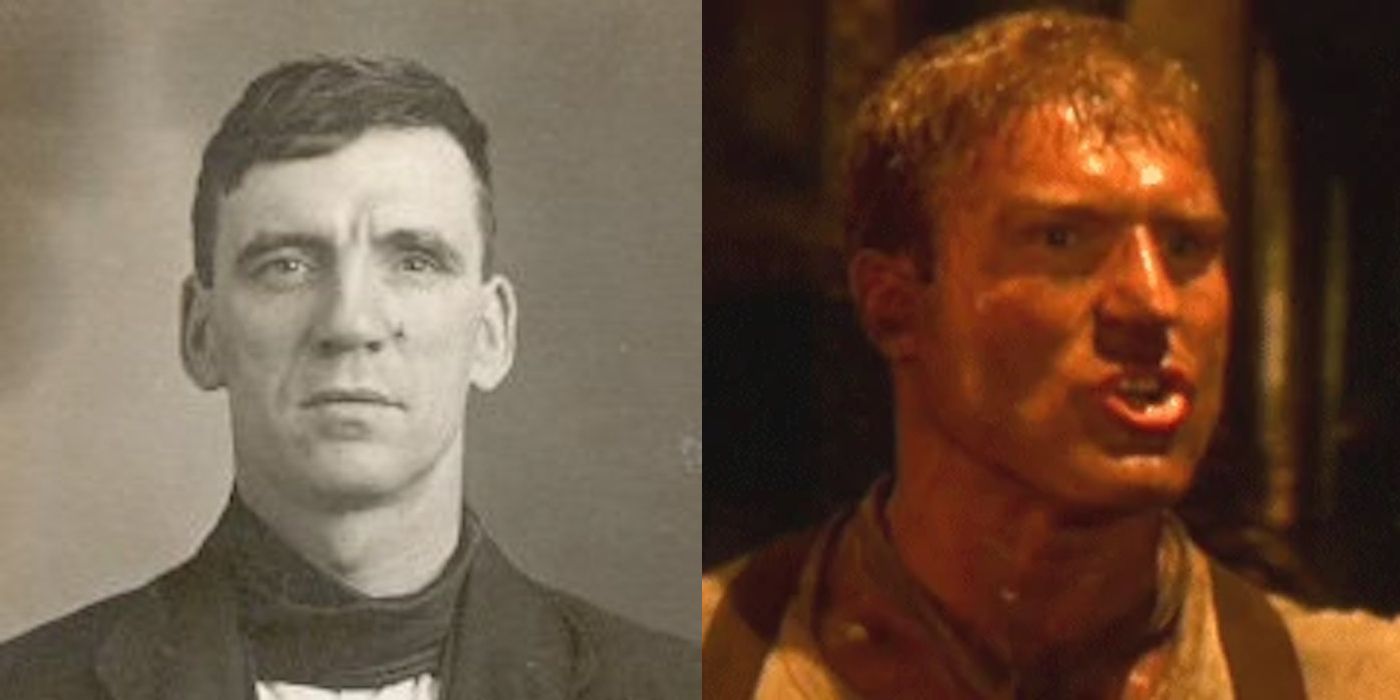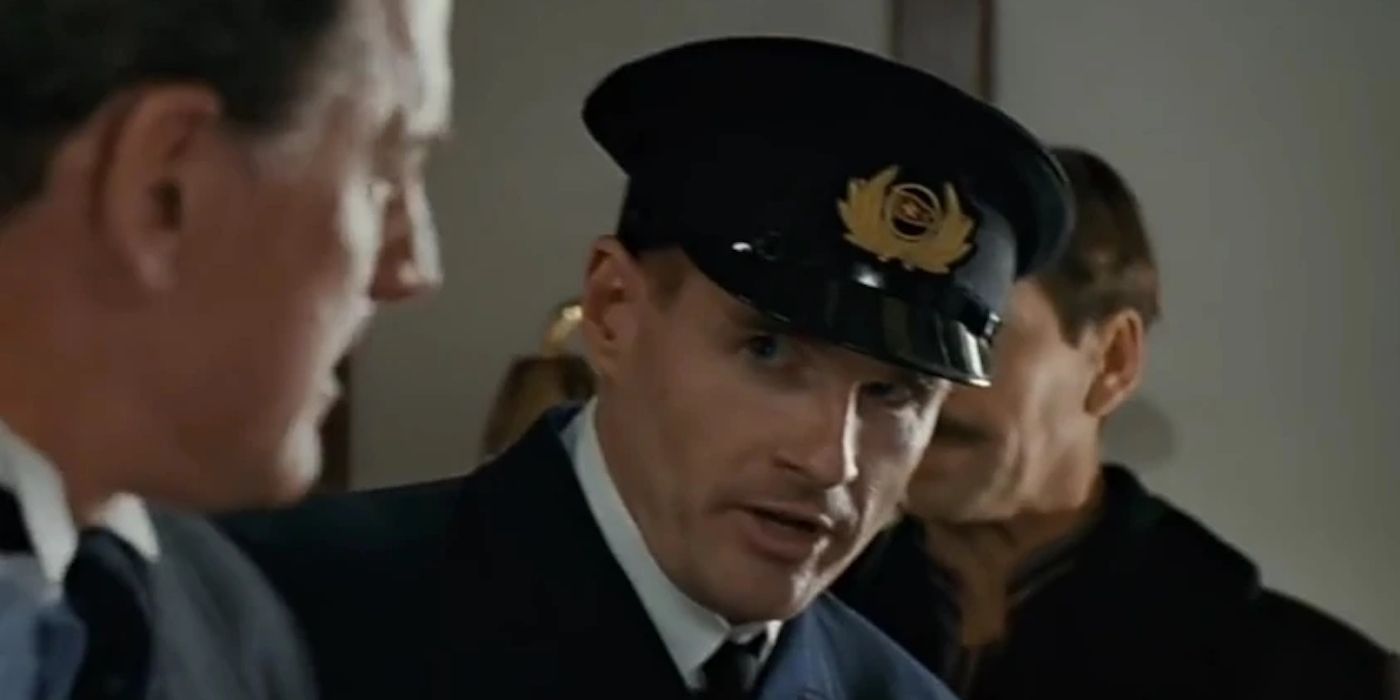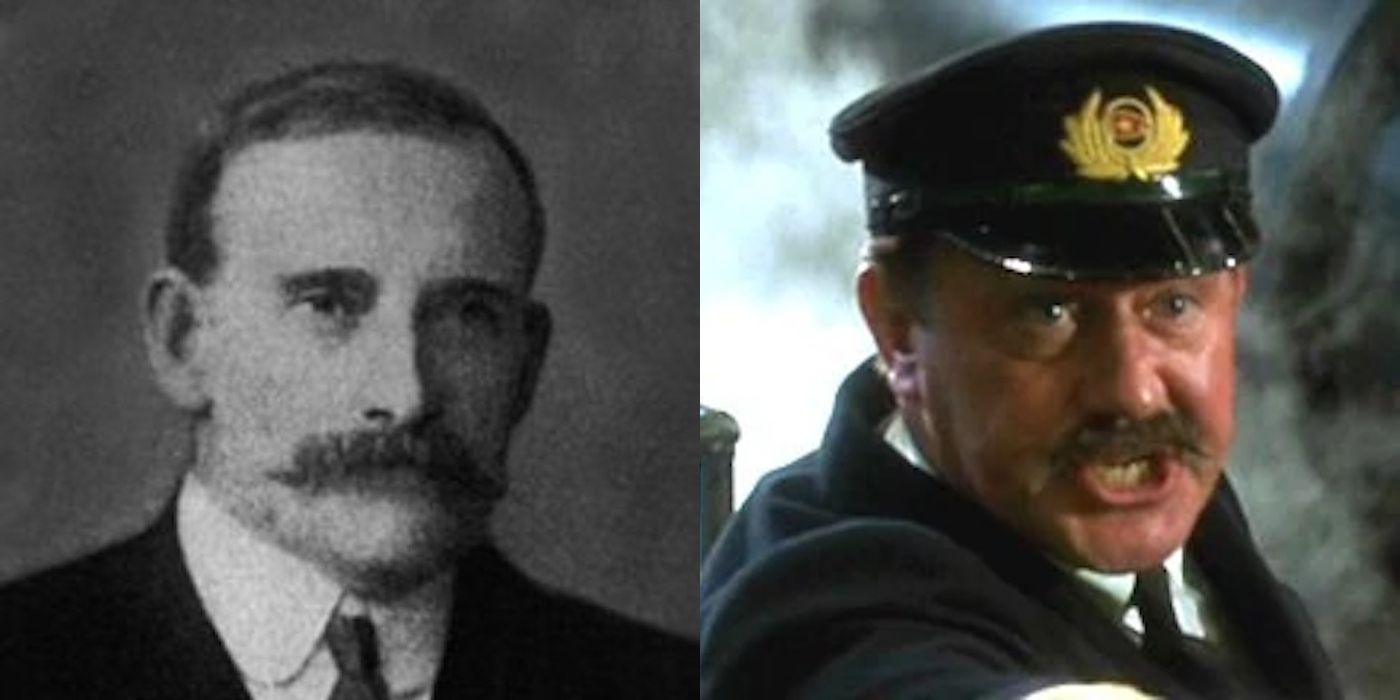James Cameron's Titanic featured numerous portrayals of real-life passengers and crew members who traveled on the ill-fated ocean liner in 1912. Although the movie's main characters Rose DeWitt Bukater (Kate Winslet) and Jack Dawson (Leonardo DiCaprio) derive from fiction, the 1998 Best Picture winner emphasizes historical accuracy in its depiction of the events leading up to the "unsinkable" ship's demise, as well as the tragedy's real-life key figures. This combination helps the film create a dramatically compelling as well as broadly accurate historical narrative.
Cameron's masterful intertwining of the RMS Titanic's disastrous maiden voyage with the fictionalized romance between Rose and Jack earned the picture 11 Academy Awards in total. The remainder of Titanic's foremost made-up personas includes Rose's mother Ruth DeWitt Bukater (Frances Fisher) and her spiteful fiancé Cal Hockley (Billy Zane). In the movie, hopeless 17-year-old Rose’s life transforms when she meets Jack, a third-class passenger and gifted artist, at the onset of history’s most famous maritime tragedy. The Titanic’s true story made headlines over a century ago when on its journey from Southampton to New York, the famed White Star Line vessel collided with an iceberg and sank beneath the Atlantic on the night of April 14, 1912—taking over 1,500 lives with it.
In addition to eight uncredited roles, Titanic incorporates more than two dozen real-life characters in its narrative. From the ship’s captain and officers to wealthy socialites and businesspeople, the portrayals contribute a sense of authenticity that pairs well with Titanic’s fictional elements. These are the 31 Titanic passengers and crew members from history depicted in the 1997 film.
Margaret "Molly" Brown (1867-1932)
Academy-Award-winning actress Kathy Bates assumed the role of Molly Brown in Titanic. Brown was a well-known socialite and activist from Missouri who came from a working-class background and later struck a fortune when her husband J.J. founded a gold mine in Colorado. While in Paris during the Spring of 1912, Brown received news of her ill grandson back home and booked her passage on the Titanic, which was the first available ship. In the film, Brown is depicted frequenting first-class gatherings—notably the dinner scene featuring Rose, Jack, and other prominent passengers.
Soon after the iceberg hit, Brown helped fellow passengers into lifeboats before she was forced to board lifeboat 6—which departed the sinking ship with just 24 of its 65 places filled. Brown urged the boat to return for survivors once the Titanic disappeared beneath the waves and even took up rowing. Hours later, while aboard their rescue ship Carpathia, Brown consoled those who lost loved ones, distributed supplies, and raised $10,000 from first-class passengers to donate to less fortunate survivors. Following the Titanic disaster, Brown's national recognition increased and she took up activism in advocating for miners' rights and women's suffrage. After her death in 1932, she became known as "The Unsinkable Molly Brown," due to her assistance to others during and after the sinking of the Titanic.
Captain Edward J. Smith (1850-1912)
Bernard Hill played the Titanic's captain, Edward J. Smith, in the 1997 movie. The ship's maiden journey from Southampton to New York was slated to be the British naval officer's final voyage before retirement. Known for his calmness and stoicism, Smith was White Star Line's senior captain and was often dubbed the "Millionaire's Captain" for his popularity among the wealthy. Captain Smith went down with the sinking ship, but there are conflicting reports of how he died. Titanic depicts a popular account of Smith's death, as a scene shows him enter the ship's wheelhouse before the room floods and water engulfs him. Some eyewitnesses claimed to have seen Smith jump into the ocean from the Titanic's bridge.
Thomas Andrews (1873-1912)
Irish-born shipbuilder Thomas Andrews was the Titanic's main designer and sailed on the ship during its first journey across the Atlantic. The White Star Line previously employed Andrews to design the Olympic—one of Titanic's sister ships. Six-time Emmy nominee Victor Garber portrays Andrews, who interacts with Rose several times throughout the movie. In real life, Andrews determined the ship's eventual fate after it struck the iceberg. Accordingly, it's Andrews who informs Rose halfway through the movie that the ship has one hour before it sinks and that there aren't enough lifeboats for everyone on board. Andrews perished on the Titanic and was reportedly last seen in the first-class smoking room, where the film depicts its final shot of him. However, others claimed to have seen him on the ship's deck throwing chairs to people in the water.
J. Bruce Ismay (1862-1937)
Played by Jonathan Hyde in 1997's Titanic, Joseph Bruce Ismay was an English businessman and chairman of the White Star Line. In the film, Ismay urges Andrews to push the ship's engines to their limit in hopes that the press will take note of the Titanic's remarkable speed. Ismay denied this during subsequent investigations of the sinking. Ismay escaped the ill-fated liner by boarding collapsible lifeboat C. The movie depicts Ismay jumping into a lifeboat seconds before it's lowered, seemingly conscious of his cowardly act, while an officer in the background looks upon him with shame. As the highest-ranking White Star Official to survive the Titanic's sinking, Ismay faced international criticism for saving himself while more than 1,500 others died. He testified that he only left the ship after helping others into lifeboats and confirming that there were no more women or children in sight, however, eyewitness reports contradicted his assertion.
First Officer William Murdoch (1873-1912)
Portrayed by Ewan Stewart in the film, Murdoch is present on the ship's bridge at the time of impact with the iceberg and gives the orders for "hard a-starboard" and later "hard a-port"—which all occurred in real life. Murdoch did not survive, however, and the circumstances of his death are still subject to controversy. In the movie, Murdoch takes his own life after shooting a third-class passenger to prevent overcrowding around the lifeboats. Although a number of eyewitnesses reported seeing an officer shoot himself, there is no evidence to confirm that it was Murdoch. Today, Murdoch is widely viewed as a hero in his home country of Scotland.
Second Officer Charles Lightoller (1874-1952)
The Titanic's Second Officer Charles Lightoller was played by Jonny Phillips in the movie. After the collision, the English sailor took charge of loading women and children into lifeboats, as seen in the film. Lightoller was the most senior crew member to survive the sinking. He jumped from the Titanic's bridge as the ship plunged beneath the waves and clung to an overturned collapsible before eventually transferring to another lifeboat. Lightoller later became a Lieutenant in the Royal Navy during World War I. In 1940, Lightoller and his son, and another young sailor evacuated 130 men from Dunkirk, France during World War II—which served as the inspiration behind Christopher Nolan's 2017 film Dunkirk.
Fourth Officer Joseph Boxhall (1884-1967)
Fourth Officer Joseph Boxhall was portrayed by Simon Crane in Cameron's Titanic. The Englishman joined the White Star Line in 1907 and served on the Oceanic and the Arabic before becoming part of the Titanic's crew for the ship's maiden voyage. On the night of April 14, Boxhall was off duty when he heard the ringing of the lookout bell and First Officer Murdoch calling to turn the ship. When he arrived at the bridge, the ship had collided with the iceberg and Captain Smith ordered him to inspect the damage. In the hour leading up to the Titanic's demise, Boxhall helped set off flares and was put in charge of lifeboat 2. When he died in 1967, Boxhall's ashes were spread in the Atlantic ocean over the location of the Titanic's sinking.
Fifth Officer Harold Lowe (1882-1944)
Played by former Fantastic Four star Ioan Gruffudd in the movie, Fifth Officer Harold Lowe was asleep in his quarters when the Titanic collided with the iceberg. Upon realizing the severity of the situation, the Welshman got up and went to work lowering lifeboats. He was placed in charge of lifeboat 14 before the ship went under. In real life, Lowe notably turned his lifeboat around to rescue four additional survivors—the only one to do so. The film depicts Lowe calling out "Is there anyone alive out there?" as he helms the boat that rescues Rose from the water.
Sixth Officer James Moody (1887-1912)
In Titanic, Fifth Officer James Moody was played by Edward Fletcher. At the age of 24, Moody joined the crew of the Titanic after serving in the British Naval Reserve. Moody first appears in the film admitting Jack and Fabrizio on board before the ship departs from Southampton. In the moments before the collision, Moody answers the frantic call from the crow's nest warning of an iceberg right ahead. In the film, as in real life, Moody assists the launching of lifeboats amid panicked passengers and rising water but does not board one himself. He was the only junior officer to die in the sinking.
Chief Officer Henry Wilde (1872-1912)
The Titanic's Chief Officer Henry Wilde was assumed by Mark Lindsay Chapman in the acclaimed 1997 film. Wilde had served the White Star Line for 15 years at the time of the ship's first voyage. He joined the ill-fated liner's crew from the Olympic along with Captain Smith. In the film, he can be seen frantically attempting to release a lifeboat as water engulfs the ship, yelling at desperate passengers to get back. After the ship goes down, Wilde clings to a deck chair but later appears dead with a whistle in his mouth—which Rose takes and uses to call lifeboat 14's attention. The real-life Wilde likely perished similarly in the freezing water. Some eyewitnesses saw him smoking a cigarette on the Titanic's bridge before disappearing beneath the waves.
Quartermaster George Rowe (1881-1974)
Quartermaster George Rowe, played by Richard Graham, first appears in James Cameron's epic movie when Jack saves Rose from her suicide attempt at the ship's stern. The real-life Rowe assisted in firing flares and sending Morse code messages to alert nearby vessels. Rowe survived the disaster by jumping into the same lifeboat as Ismay, however, he is absent from this scene in the movie. Rowe died in 1974 at the age of 92. He was the last surviving quartermaster and deck crew member of the Titanic.
Related: Every Unmade James Cameron Movie (& Why They Didn't Happen)
Quartermaster Robert Hichens (1882-1940)
Actor Paul Brightwell portrayed the real-life character of Robert Hichens in Titanic. The English quartermaster was at the ship's wheel when it struck the iceberg. Later that night, Lightoller ordered Hichens to helm lifeboat 6. In the movie, Hichens argues with Brown, who urges him to go back for survivors. Hichens angrily refuses, claiming that they will be swamped by passengers trying to climb aboard. Hichens' real-life conduct in the lifeboat had drawn criticism, as a woman accused him of "using bad language and drinking all the whiskey"—which he denied during inquiries of the sinking. Hichens' life after the Titanic disaster deteriorated due to alcoholism and loss of work.
Frederick Fleet (1887-1965)
Lookout Frederick Fleet first sighted the iceberg that would breach the side of Titanic's hull. The 23-year-old from Liverpool rang the bell three times and called the bridge below, shouting the famous words, "Iceberg, right ahead!" Fleet, played by future Pirates of the Caribbean 5 actor Scott Anderson in the film, was soon relieved of lookout duty and sent to load lifeboat 6 alongside Hichens. The movie's depiction of Fleet during the iceberg sequence largely mirrors that of real life, although with the addition of Rose and Jack's nearby embrace that momentarily distracts him and his fellow lookout. In 1912 following the sinking, Fleet briefly served on the Olympic, however, the White Star Line viewed Titanic survivors as embarrassing reminders of the disaster, thus Fleet left the company months later. He later became a shipbuilder, Master-at-Arms, and part-time newspaper vendor. Fleet died by suicide in 1965, weeks after his wife passed away.
Reginald Lee (1870-1913)
Reginald Lee, portrayed by Martin East, stood beside Fleet in Titanic's crow's nest as the iceberg neared, as seen in the film. Lee joined the crew of the Titanic as a transfer from the Olympic. Lee survived the sinking, as he was in charge of lifeboat 13. He died a year later due to complications from pneumonia.
Harold Bride (1890-1956)
The role of the Titanic's junior wireless officer Harold Bride is assumed by Queer As Folk actor Craig Kelly in the film. Bride worked alongside Jack Phillips, sending out personal messages and receiving navigational information from nearby ships. In the movie, he informs Smith of the message from the Carpathia saying their rescue vessel will arrive in four hours. Bride's screen time amounts to little, but his real-life survival was rather miraculous, as he and Phillips worked until water invaded the radio room. In search of a lifeboat amid the crowd of frantic passengers, Bride was washed underneath an overturned lifeboat. He successfully fought his way to the surface and settled atop the overturned collapsible B. Bride, although injured, helped the Carpathia's wireless operator send out personal messages and names of survivors.
Jack Phillips (1887-1912)
Actor Gregory Cooke played the Titanic's senior wireless operator Jack Phillips in the film. On the night of April 14, Phillips was busy clearing a backlog of passengers' messages from when the wireless had broken down the day before. Upon receiving an ice warning from the nearby Californian, Phillips messaged back to the vessel telling its operator to leave him alone, although he had relayed a number of prior ice warnings to Captain Smith. Soon afterward, the Californian shut down its radio for the night and thus, did not heed the Titanic's distress signal. In a deleted scene, Phillips and Bride work through messages in the radio room, as Phillips hears the Californian's ice warning and arrogantly retorts. Subsequently, the Carpathia's operator, taken aback by Phillips' reply, says he's done for the night and shuts down the radio. In another deleted scene, Captain Smith tells Phillips to send out the distress call "CQD" with the ship's position. When he leaves the room, Bride suggests using a new distress call "SOS." Although hardly depicted in the movie following the iceberg collision, the real-life Phillips worked in the operating room with Bride until the ship's final moments. Unlike Bride, Phillips perished in the sinking, as his body was discovered lifeless upon an upturned lifeboat.
Charles Joughin (1878-1956)
Charles Joughin, played by Liam Tuohy, was the Titanic's chief baker. Joughin's survival story revolves around supposedly consuming copious amounts of alcohol—which enabled the baker to endure the frigid water. The baker later admitted to drinking liquor in his cabin, although maintained that he was not intoxicated. In the movie, Joughin can be seen drinking from a flask atop the ship's stern alongside Rose and Jack moments before the Titanic takes its final plunge. That's his final appearance in the film, though in real life, Joughin settled by the overturned collapsible B before a lifeboat picked him up.
Father Thomas Byles (1870-1912)
Father Thomas Byles boarded the Titanic in Southampton with plans to officiate his younger brother's wedding in New York. He was scheduled to travel on a different White Star liner but made a last-minute switch to the Titanic as a second-class passenger. Portrayed by James Lancaster in the film, the Catholic priest can be seen leading prayer as the ship goes down. In real life, many survivors praised Byles as a hero for comforting fellow passengers, helping women and children into lifeboats and praying with those who, like him, would not survive the sinking of the ship.
Isador & Ida Straus (1845-1912), (1849-1912)
Lew Palter and Elsa Raven took on the roles of German-American married couple Isador and Ida Straus in the movie Titanic. Isador was a businessman, former U.S. Congress member, and co-owner of Macy's department store. Isador and Ida boarded the Titanic in Southampton to return to their home in New York after traveling in Europe. During the sinking, the couple was offered places in lifeboat 8, however, Isador declined to board while there were still women and children on the ship. They were last seen standing together on the Titanic's deck. Both Isador and Ida died in the sinking and only Isador's body was later recovered. The film accurately portrayed the pair's inseparability, although took some liberties in their death scene. A deleted scene from Titanic shows Isador urging Ida to get into a lifeboat, although she refuses and stays by his side. The film's final shot of the pair–and one of its saddest—depicts them in their bed as water floods their cabin.
John Jacob Astor IV (1864-1912)
John Jacob Astor IV was the world's richest man at the time he stepped foot on the Titanic. A native of New York, he was the product of a wealthy and influential family and became a financier and inventor. J.J. built several notable New York City hotels, including the St. Regis. In addition to his real estate endeavors, Astor served in the U.S. Army during the Spanish-American War. Astor married Madeleine Talmange Force in 1911 after ending his unhappy marriage with Ava Lowle Willing. After a vacation to Europe in April 1912, the pair returned to America aboard the Titanic. Astor was played by Eric Braeden in the film and first appears during the dinner party scene when Rose introduces Jack to him and Madeleine. J.J. was last depicted in the movie's third act, standing by the Titanic's Grand Staircase as water rushes in. The real-life Astor ensured that his wife got in a lifeboat and then stood on the ship's deck as it disappeared into the ocean. Astor did not survive and his body was recovered 10 days after the sinking.
Madeleine Astor (1893-1940)
Charlotte Chatton, who previously appeared in a sequel to the horror hit Hellraiser, played J.J. Astor's wife Madeleine, who was 18 at the time of the Titanic's maiden voyage. Her marriage to J.J. drew public controversy due to the couple's 29-year age gap and his status as a divorcee. Madeleine was also pregnant with J.J.'s son during the trip. Madeleine survived the sinking on lifeboat 4 and later named her newborn son John Jacob V in tribute to his deceased father. Madeleine inherited J.J.'s five-million-dollar trust fund, as well as his home on New York City's Fifth Avenue—as long as she did not remarry. However, Madeleine ended up marrying and divorcing twice.
Archibald Gracie IV (1858-1912)
Archibald Gracie IV was a writer, real estate investor, and former U.S. Army colonel. After a trip to Europe, Gracie boarded the Titanic in Southampton as a first-class passenger. In the film, Gracie was portrayed by Bernard Fox, who previously made an uncredited appearance as Frederick Fleet in 1958's A Night to Remember. He first appears in the film on the first night of the ship's voyage after Jack saves Rose from nearly jumping overboard. Gracie hails Jack as a hero and says he should be rewarded for his good deed. During the sinking, he is present on the deck and tells Rose and Jack where to find more lifeboats. Gracie appears in a deleted scene aboard the Carpathia, evidencing his survival. In real life, Gracie escaped death by clinging to the overturned collapsible B, though his health quickly deteriorated as a result and he passed away in December of the same year.
Benjamin Guggenheim (1865-1912)
American businessman Benjamin Guggenheim traveled on the Titanic in first class accompanied by his mistress and personal assistant. Portrayed by actor Michael Ensign, who is probably best known as the hotel manager in Ghostbusters, Guggenheim is one of many first-class passengers to appear in the dinner party scene. His assistant Victor Giglio was played by Chris Cragnotti in an uncredited role. In the movie's third act, when asked by a steward to put on a life belt, Guggenheim declines and says, "We are dressed in our best and are prepared to go down as gentlemen. But we would like a brandy!" His final scene in the film depicts him and Giglio sitting by the Grand Staircase as water rushes toward them In reality, Guggenheim uttered the same words, as he and Giglio changed into their most formal attire before both perishing in the sinking.
Léontine Aubart (1887-1964)
Guggenheim's mistress Léontine Aubart was played by Fannie Brett. Although the film refers to her as "Madame Aubert," her real-life surname was Aubart. A French singer, Aubart brought her maid Emma Sägesser aboard the Titanic, although she is not depicted in the film. Aubart's only scene comes as she converses with Guggenheim during the first-class dinner party. In real life, Aubart and Sägesser escaped the sinking in lifeboat 9.
Sir Cosmo Duff Gordon (1862-1931)
Veteran actor Martin Jarvis, whose credits include The Girl With The Dragon Tattoo remake, played the small role of Sir Cosmo Duff Gordon, a renowned Scottish fencer and landowner. His first and only scene in the movie takes place at the dinner party, as he briefly talks with Cal and says, "Congratulations, Hockley. She's splendid," in reference to Rose. Sir Cosmo survived on lifeboat 1, which departed with only 12 people. He was accused of bribing the boat's crewmen to not return and rescue more, however, the British Board of Trade later cleared his name of wrongdoing.
Lucile, Lady Duff Gordon (1863-1935)
British fashion designer Lucile, Lady Duff Gordon was the wife of Sir Cosmo and accompanied him on the Titanic. Played in the film by Rosalind Ayres, she can be seen alongside her husband during the first-class dinner party. Rose waves to the pair and mentions to Jack that Lucile "designs naughty lingerie, among her many talents" and is "very popular with the royals." Lucile survived the sinking with Sir Cosmo in lifeboat 1.
Wallace Hartley (1878-1912)
Wallace Hartley is often cited as one of the Titanic disaster's most prominent heroes. As the lead musician of the ship's band, he and the other violinists bravely played as the ship sank in order to maintain calm. Hartley was portrayed by Jonathan Evans-Jones in the film, who has performed on several prominent movie soundtracks, including No Time To Die. Numerous survivors mentioned hearing "Nearer My God to Thee" during the ship's final moments above water, as the movie depicts over a sequence that includes numerous death scenes paired with the chaotic struggle on the deck to release the final lifeboats and escape the invading water. Neither Hartley nor any of his seven bandmates survived the disaster, although Hartley's body was recovered two weeks later with a case strapped to him containing his violin.
Frederick Barrett (1883-1931)
Derek Lea portrayed the Titanic's lead stoker Frederick Barrett in the 1997 film. Among those who escaped the flooding boiler room—as the film shows—Barett eventually made it to A deck and jumped into lifeboat 13 just as it prepared to lower. Barrett saved roughly 70 others with him when lifeboat 15 nearly crushed them from above. Barrett hurried to cut the falls to free the boat—a scene that appears in the movie.
John Hutchinson (1884-1912)
The Titanic's carpenter John Hutchinson was portrayed by Richard Ashton in the film. During the real-life sinking, he was believed to have informed Captain Smith that the forward compartments were rapidly flooding. In the film, Hutchinson appears next to Victor Garber's Andrews as he assesses the ship's damage and determines that it will sink. He does not appear again, though according to history, Hutchinson lost his life in the disaster.
Joseph Bell (1861-1912)
Joseph Bell served as the chief engineer in the ship's engine room. Actor Terry Forrestal assumed the role of Bell in Titanic. He can be seen presiding over the boiler room toward the beginning of the ship's voyage and later in the frantic moments before it collides with the iceberg. Bell perished in the sinking, as he and other engineers and electricians worked to keep the liner's lights on until the end.

